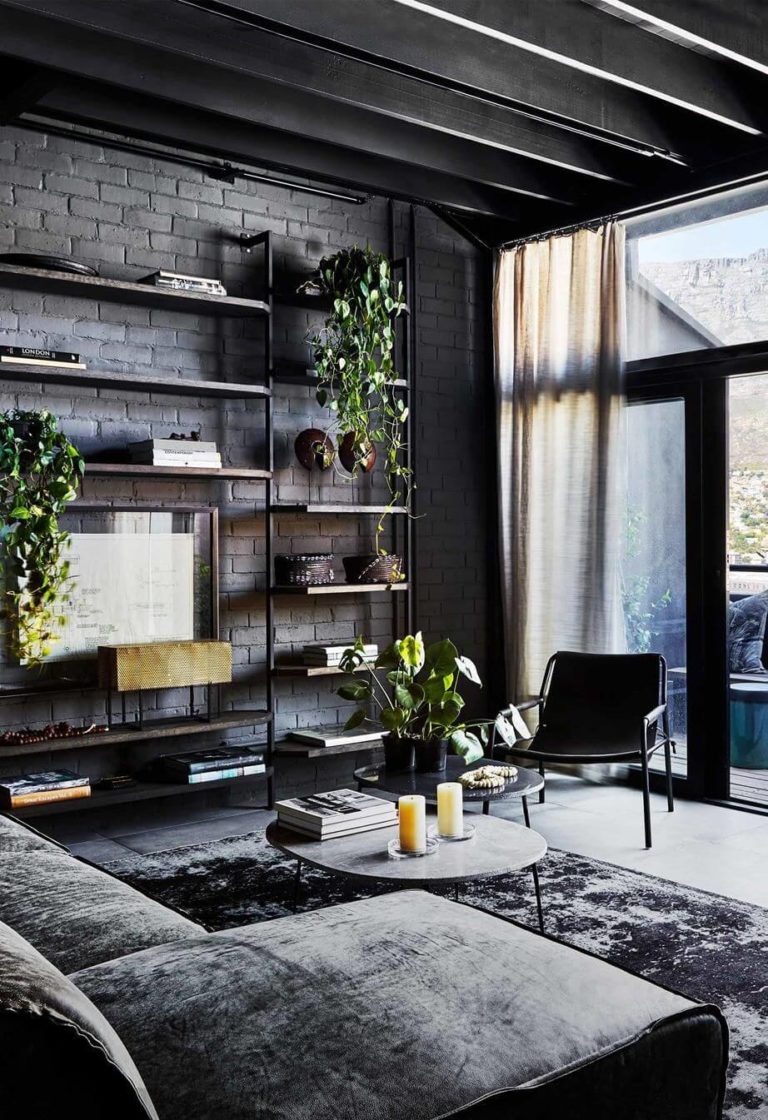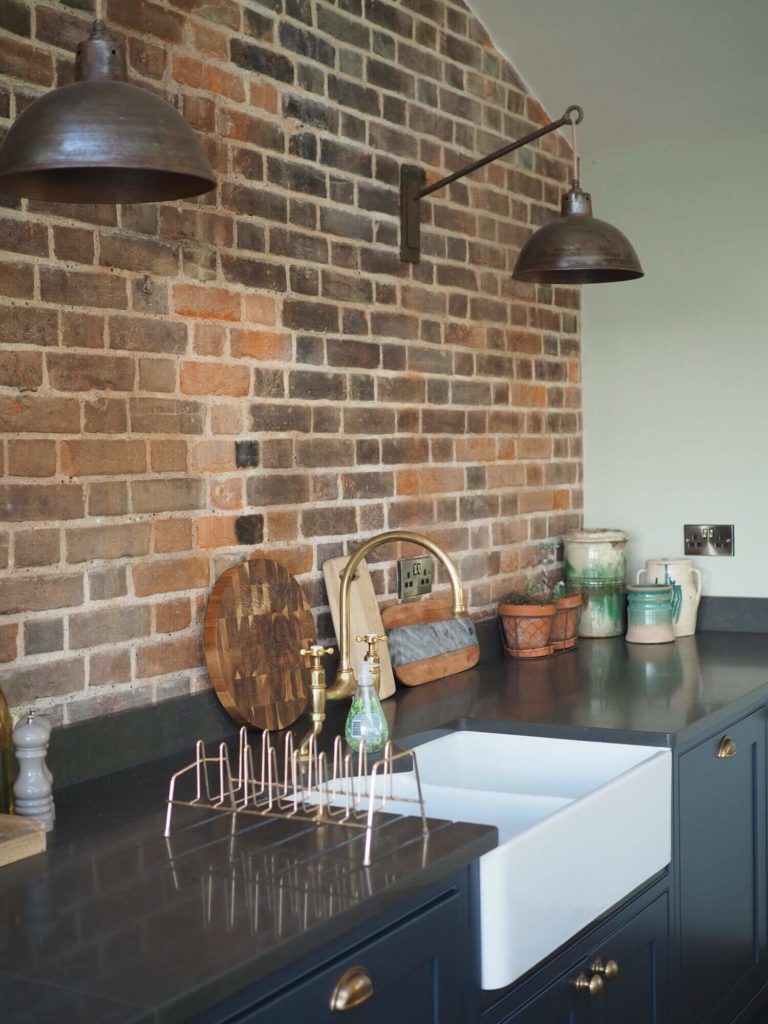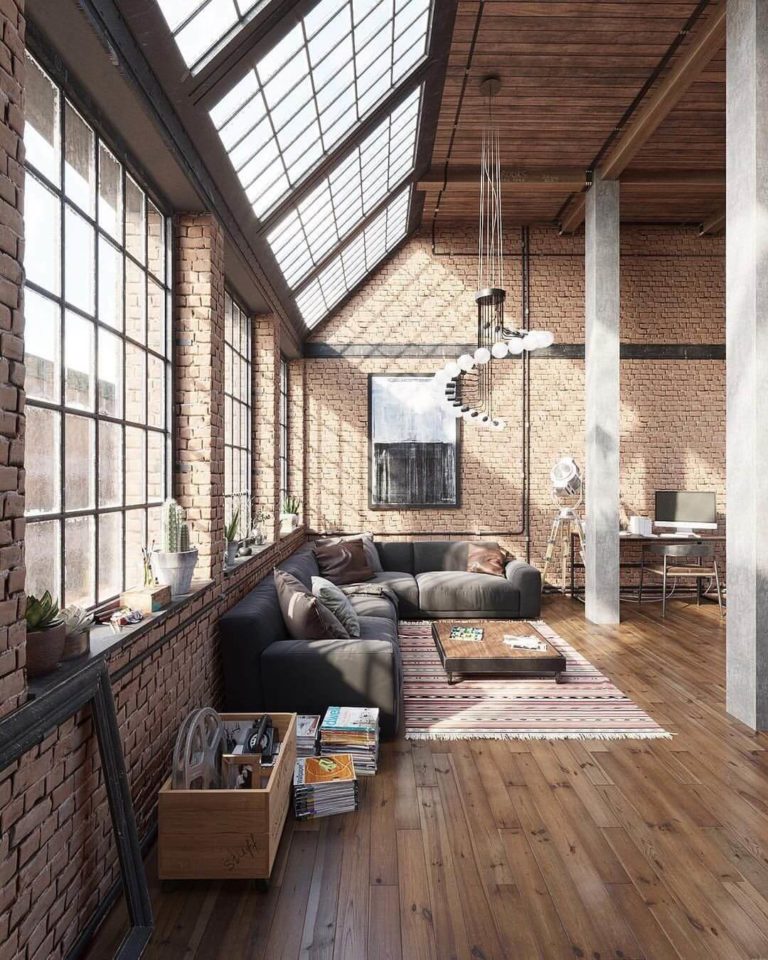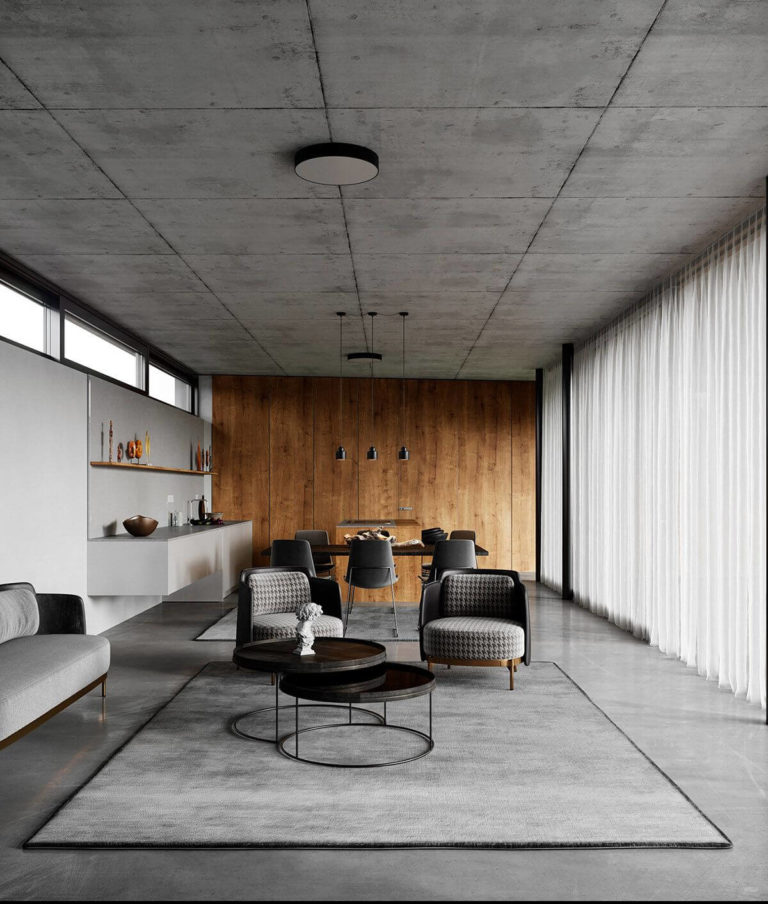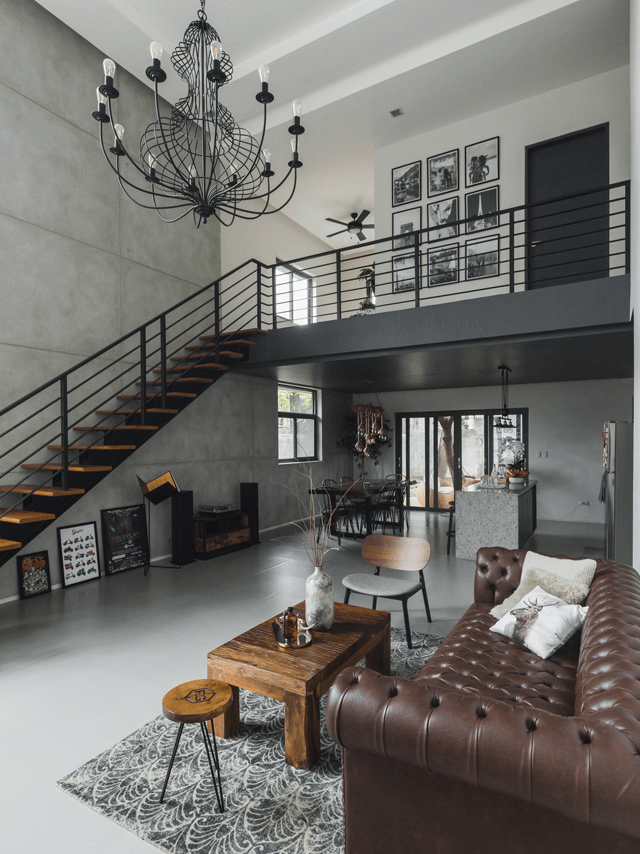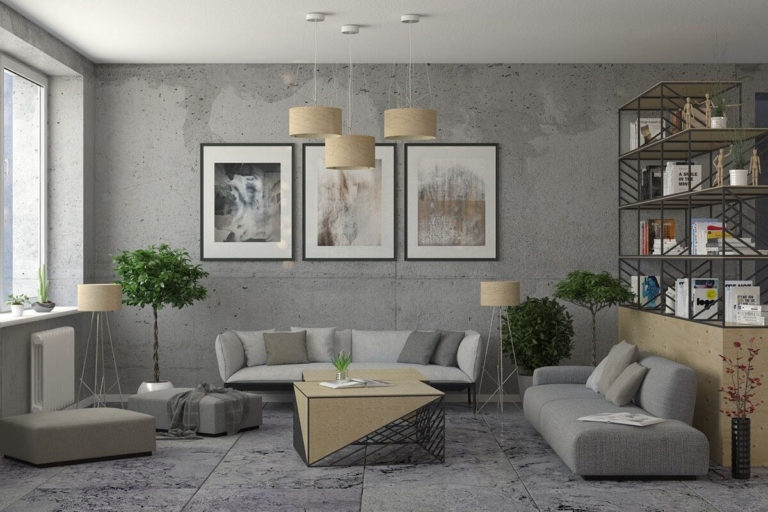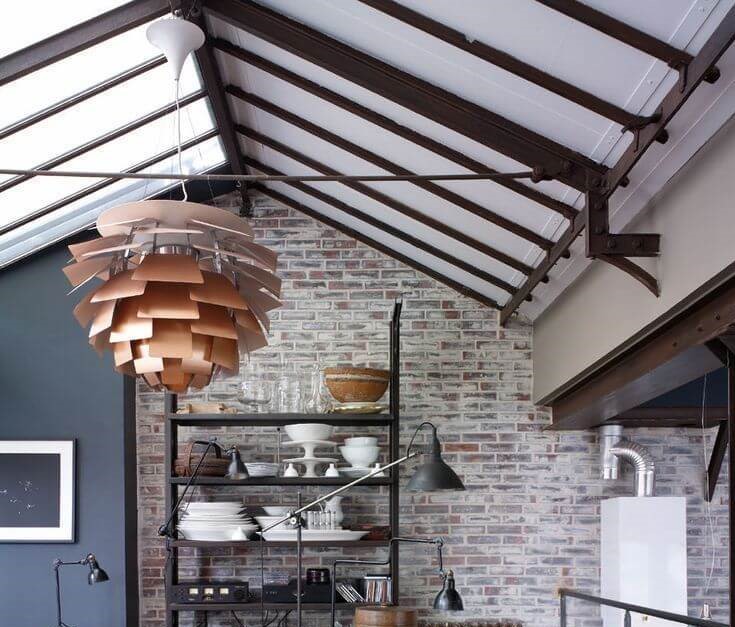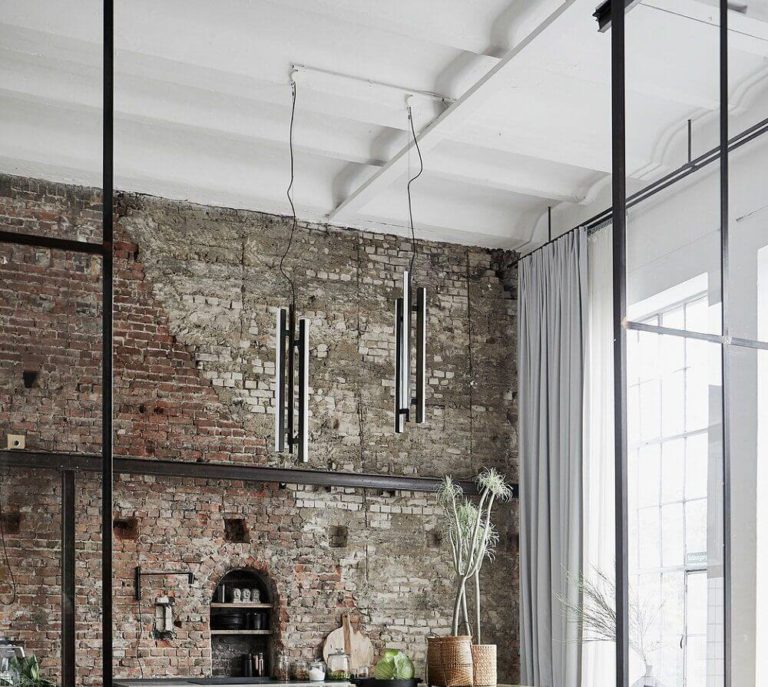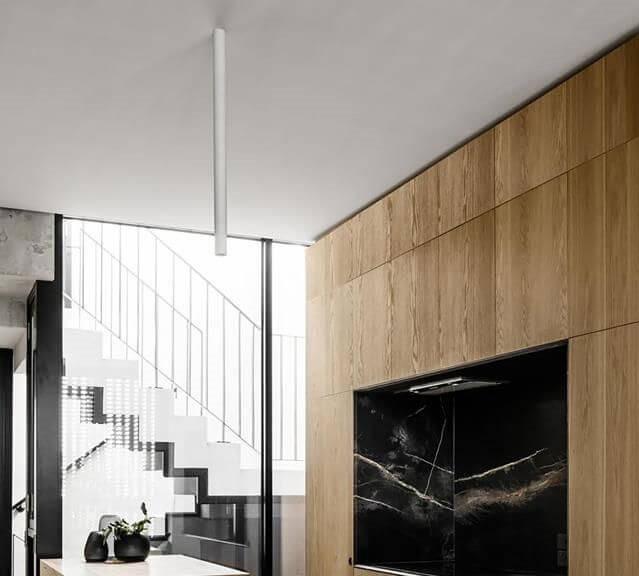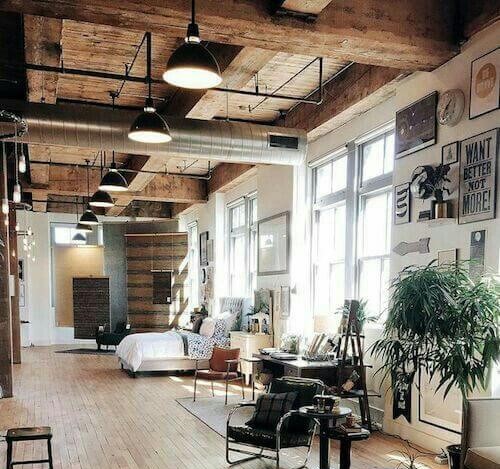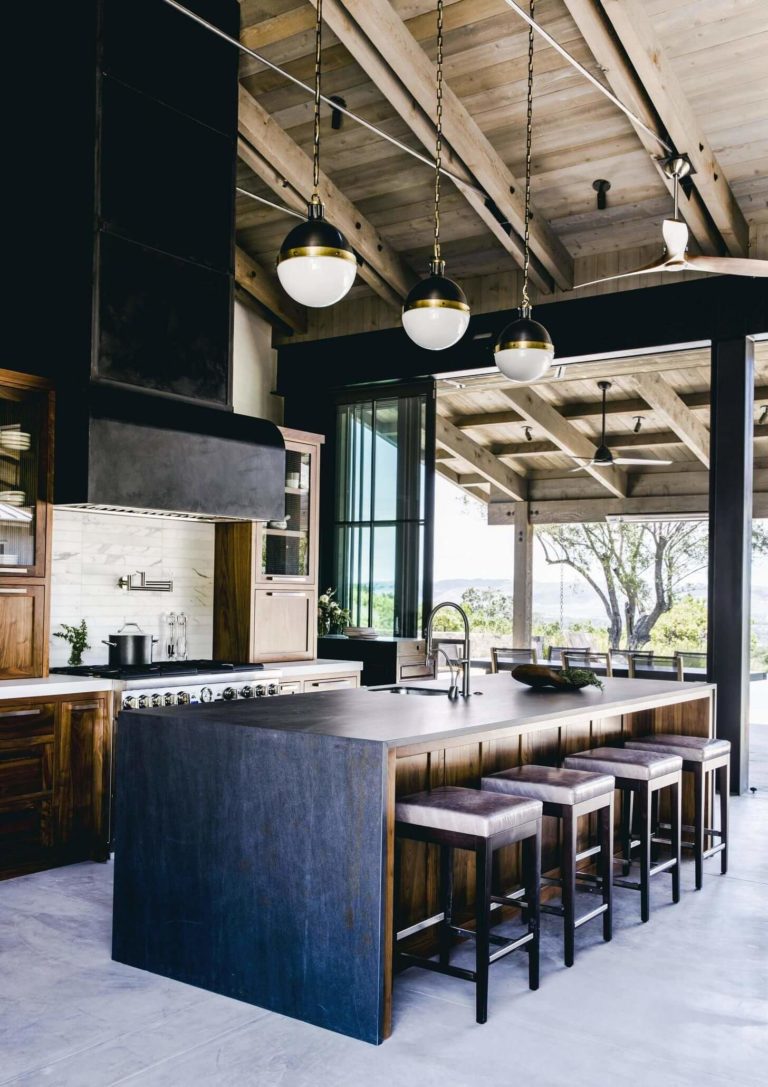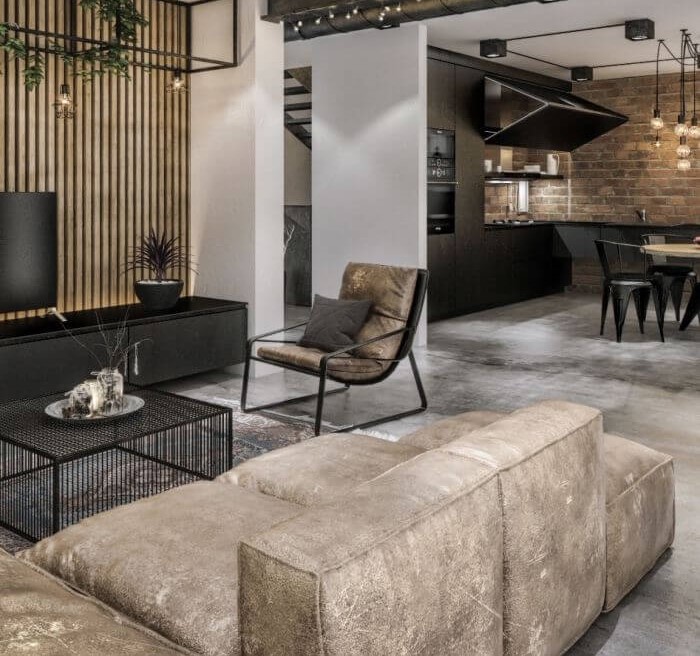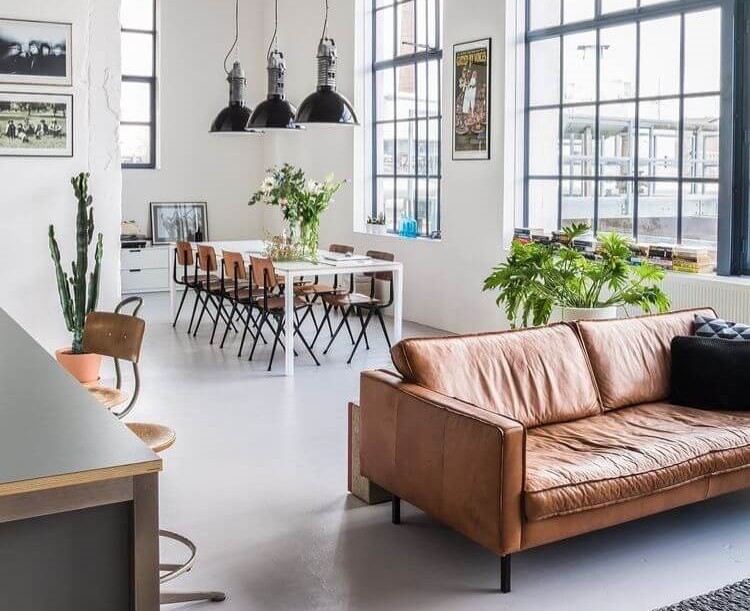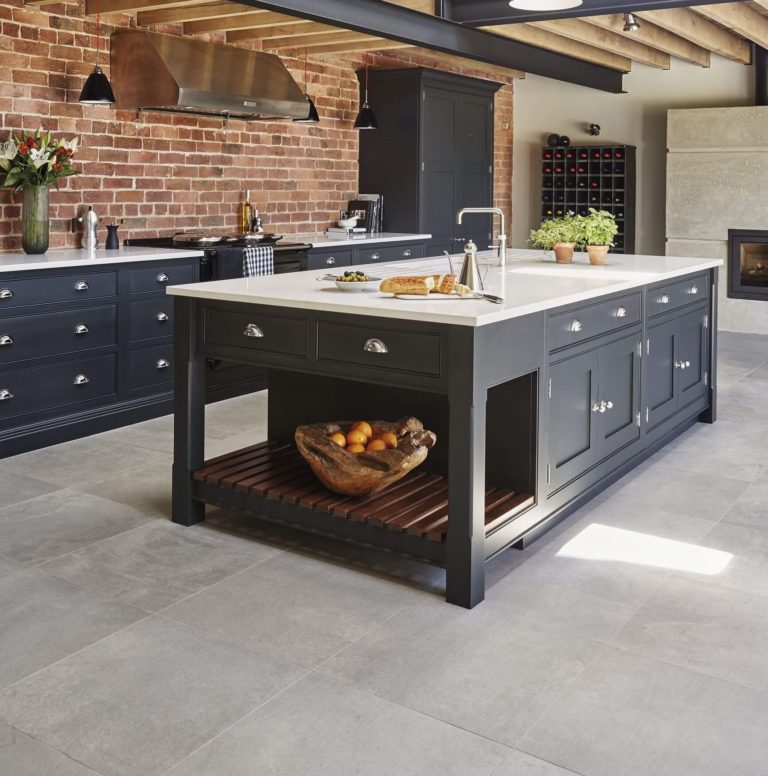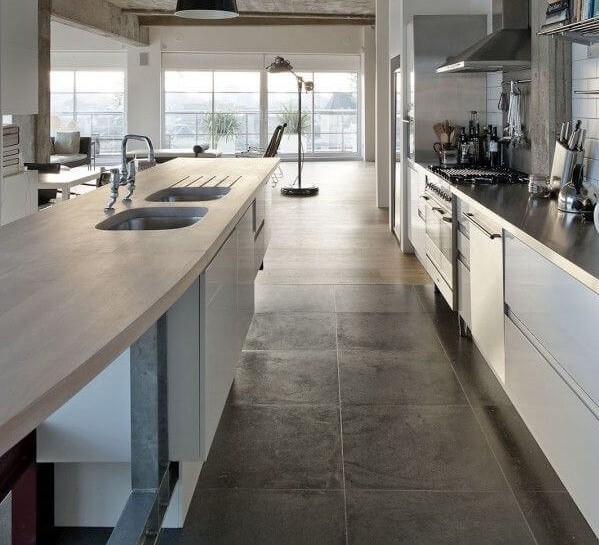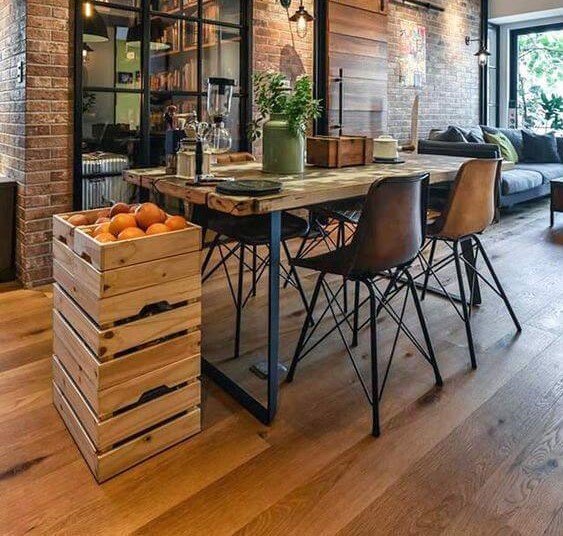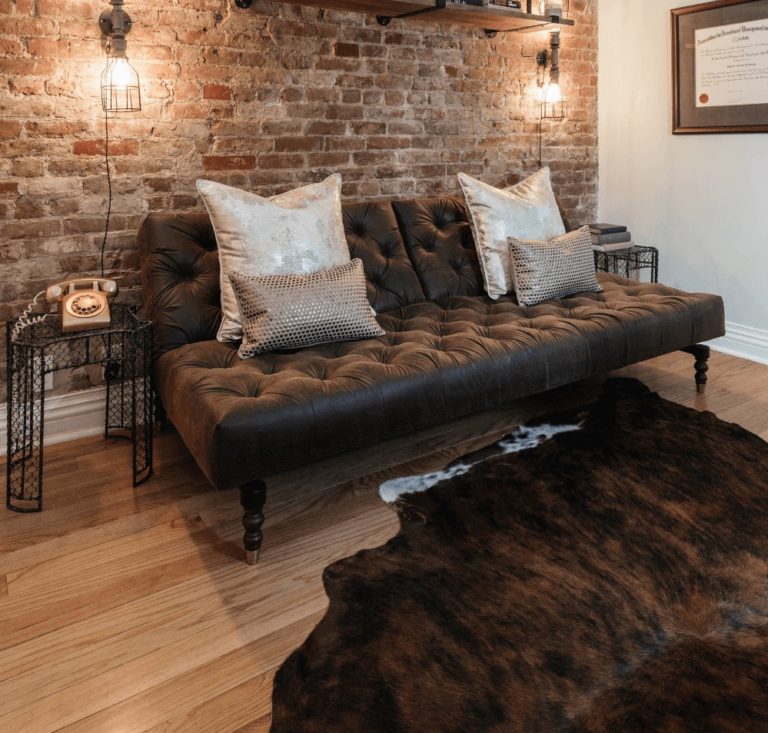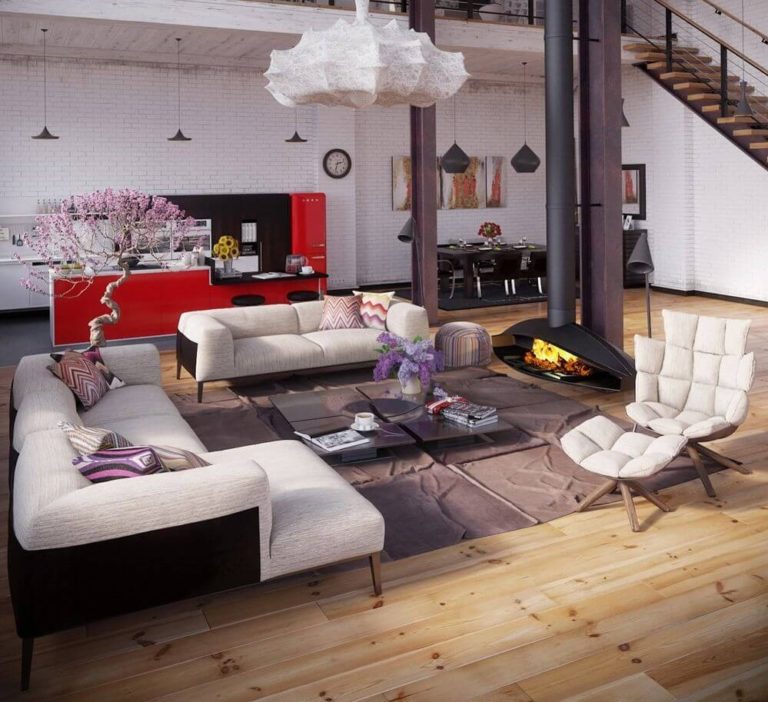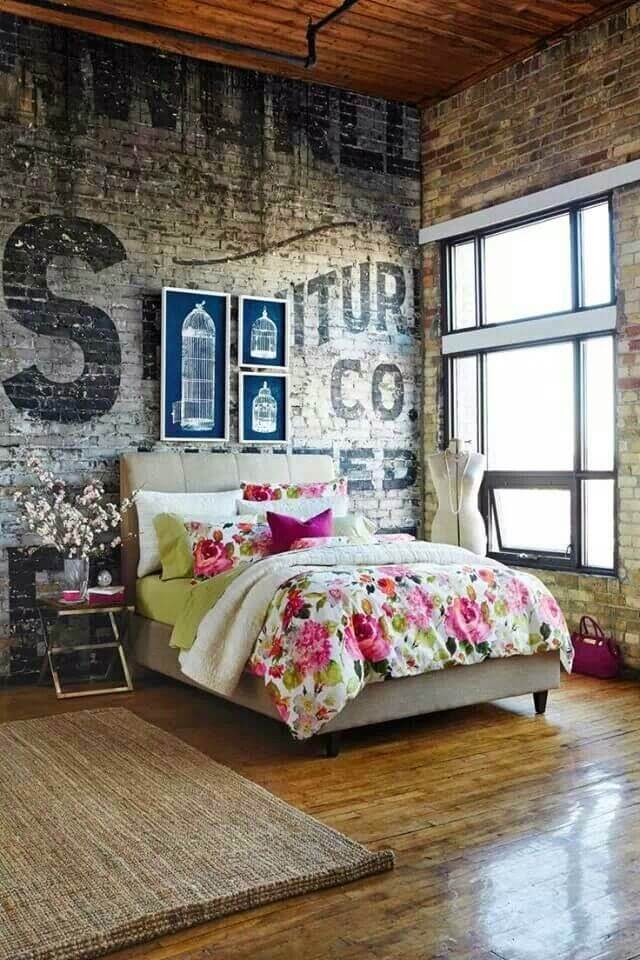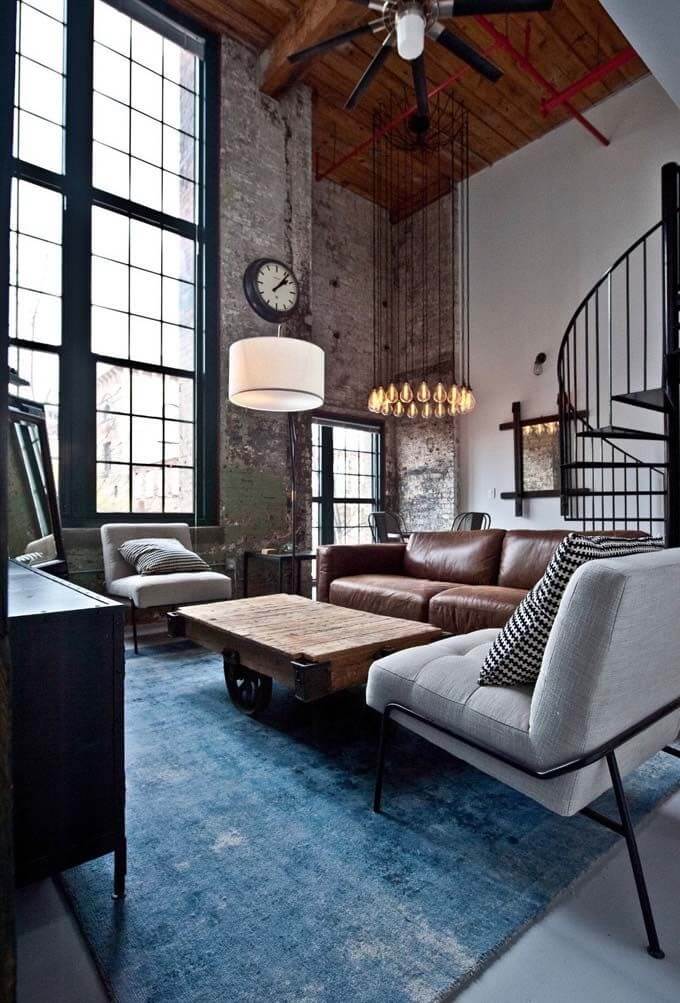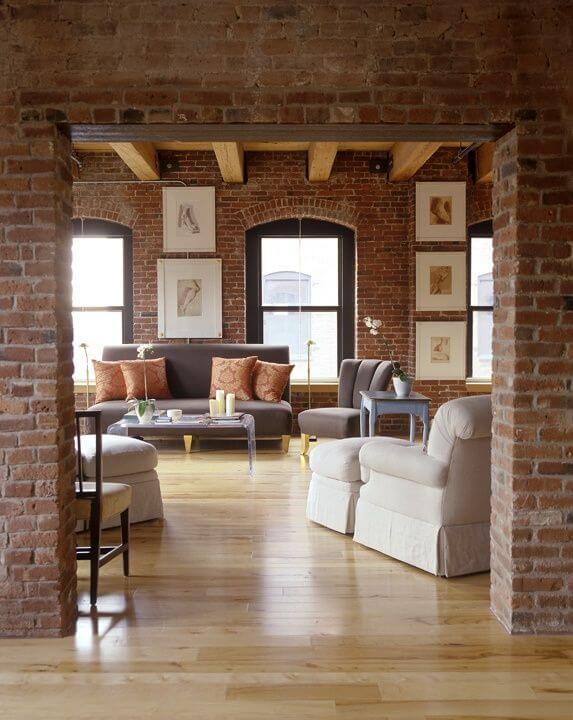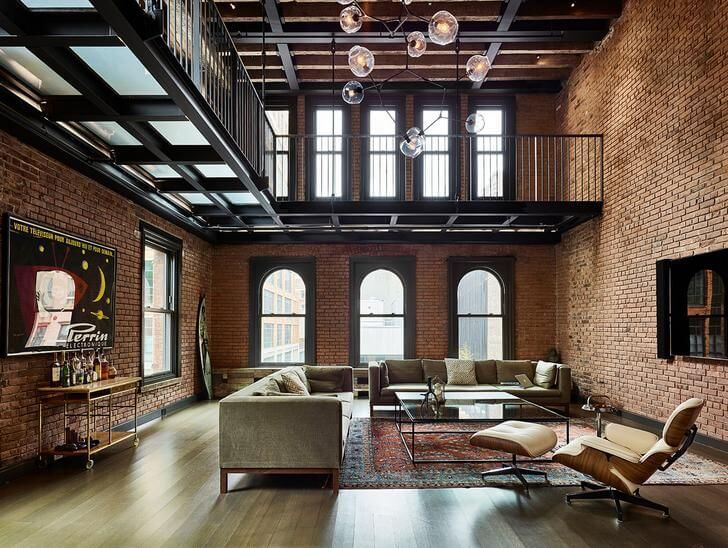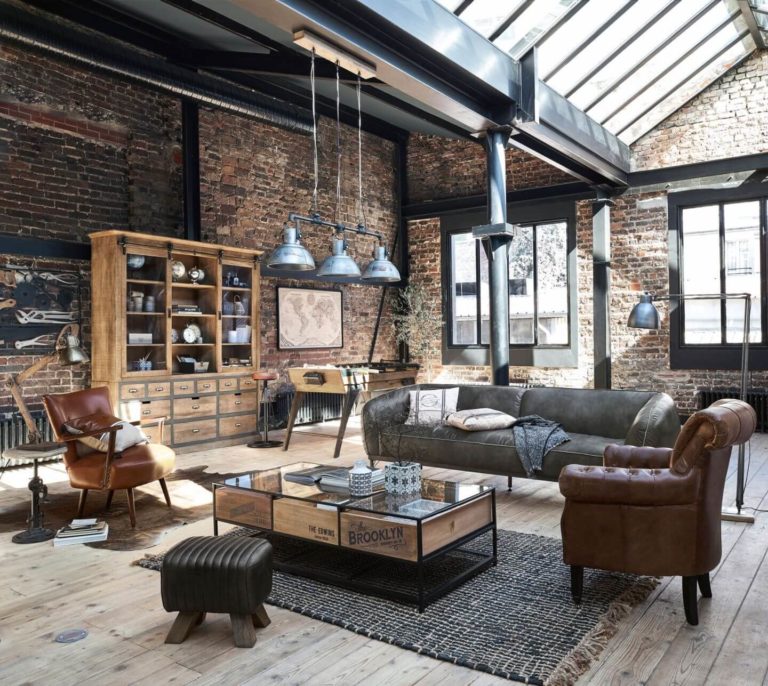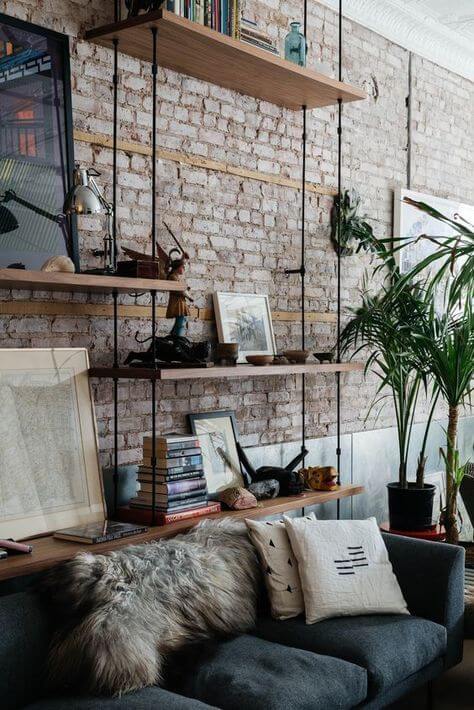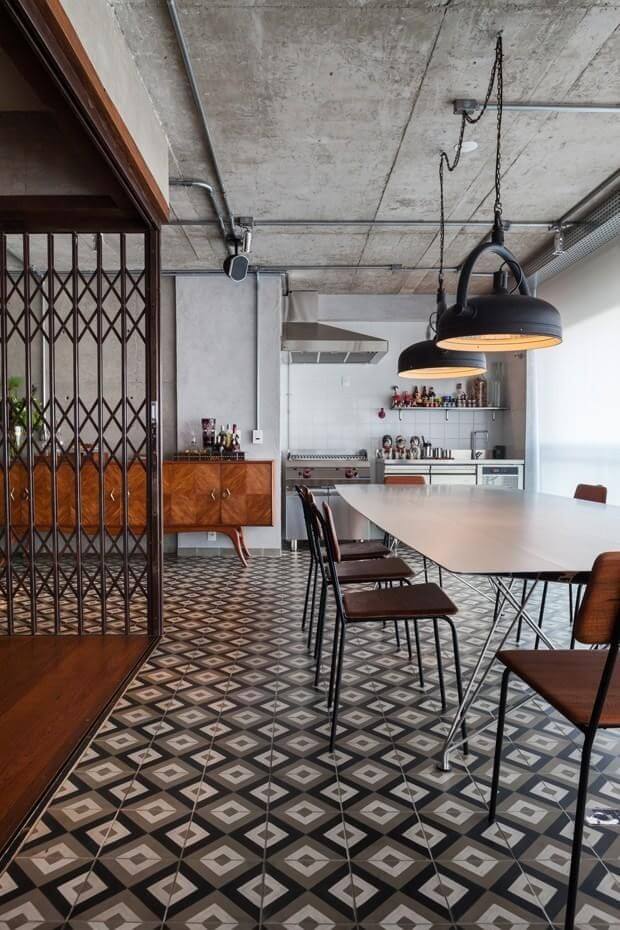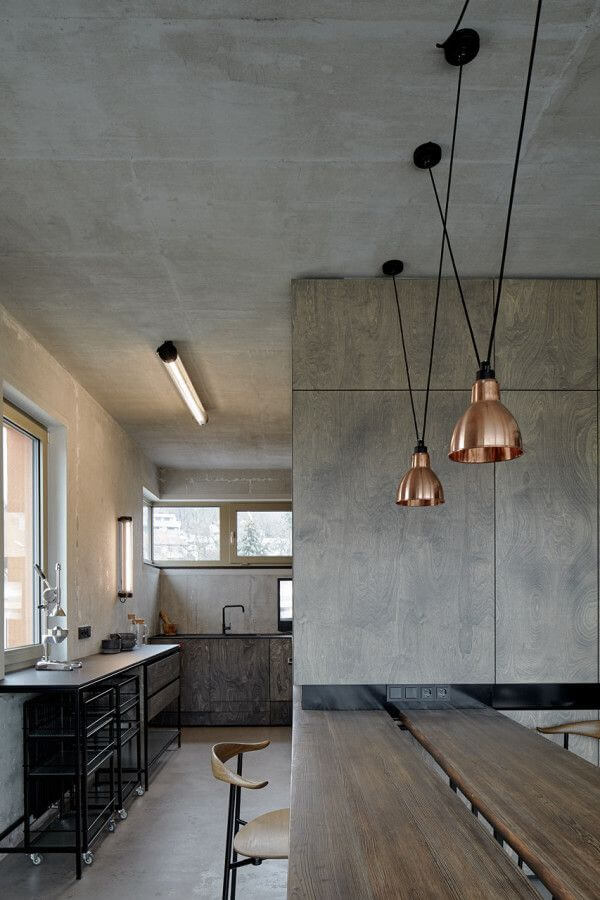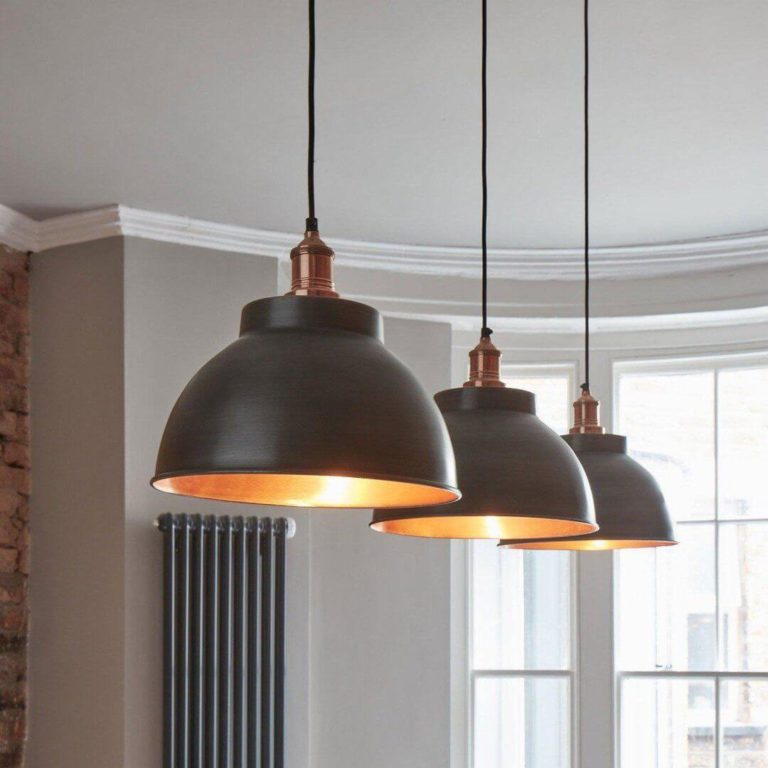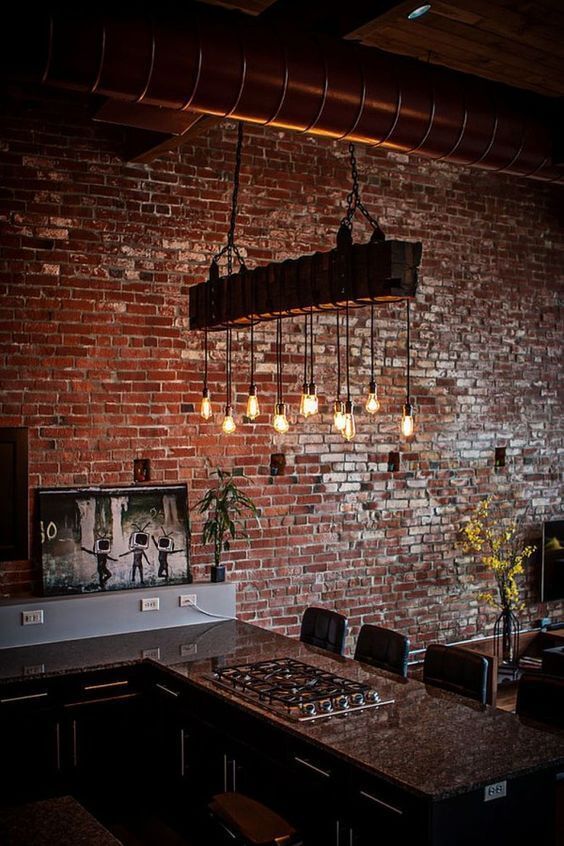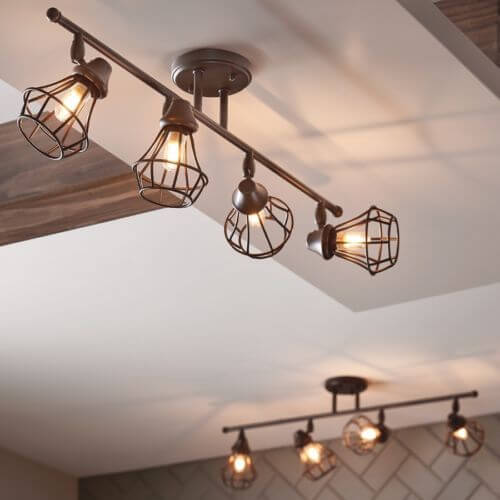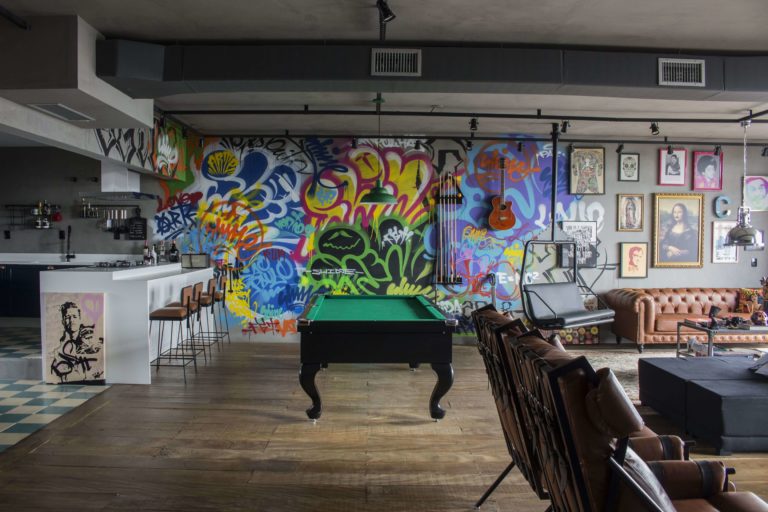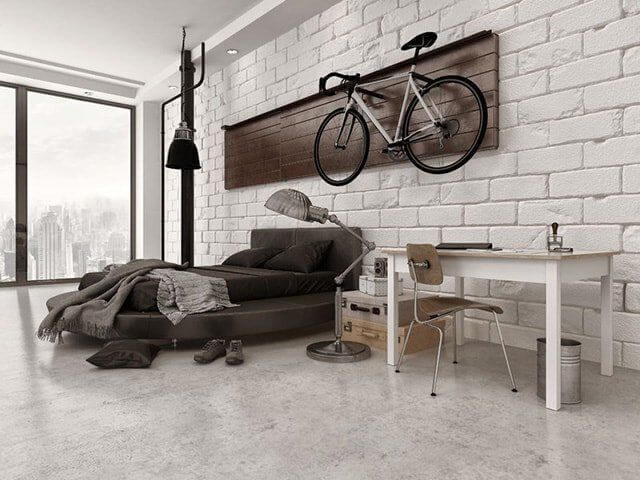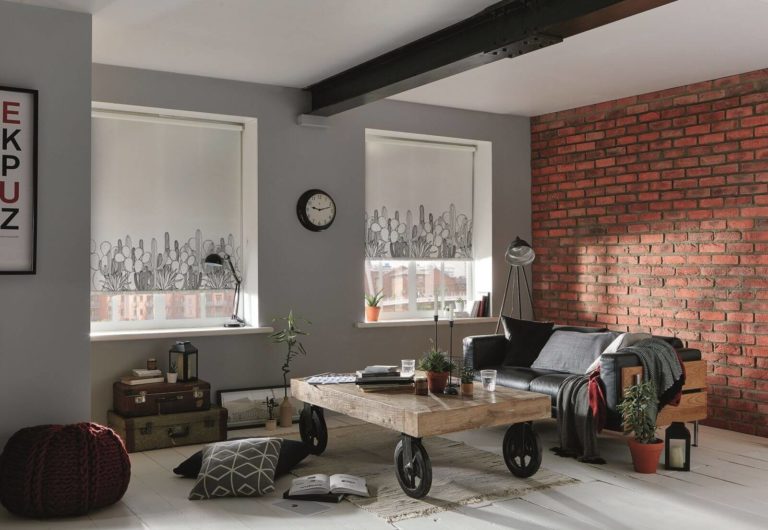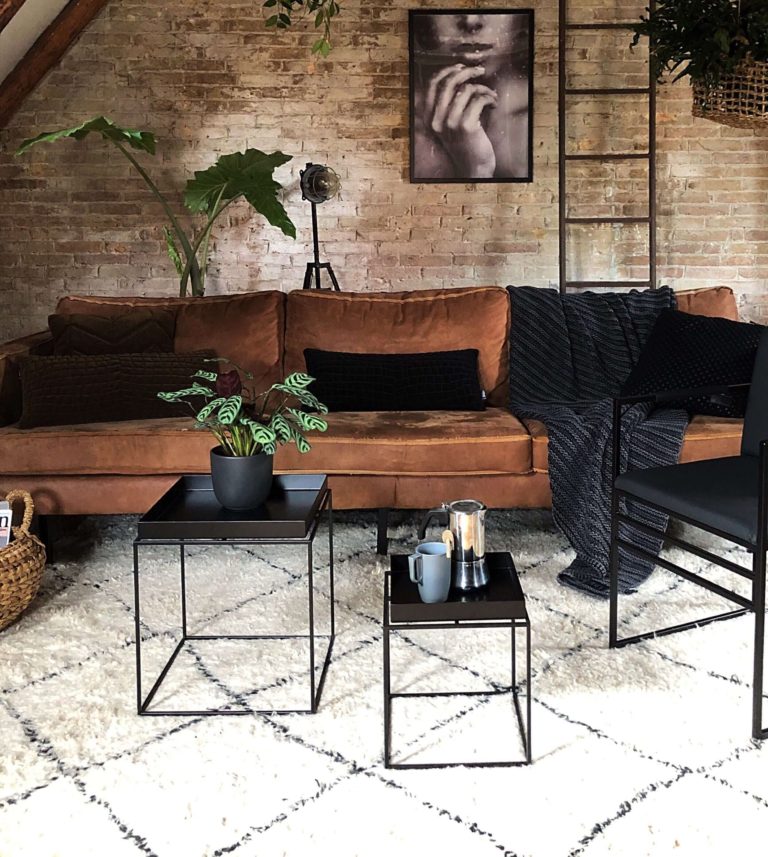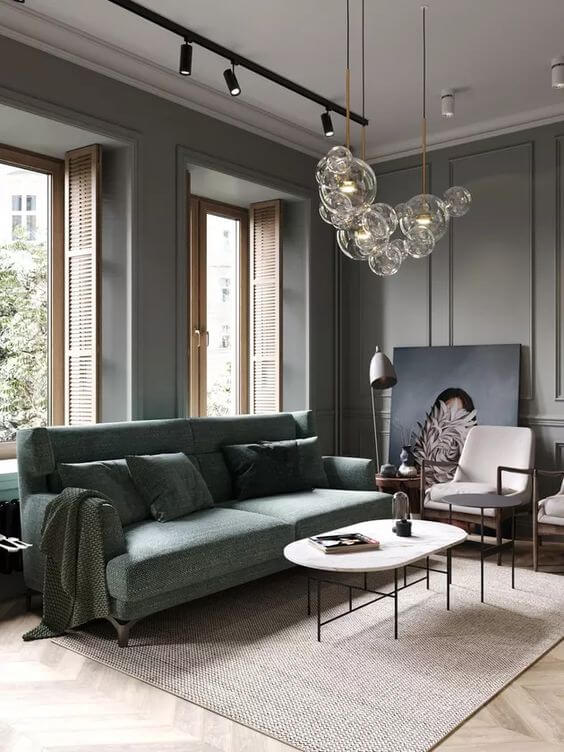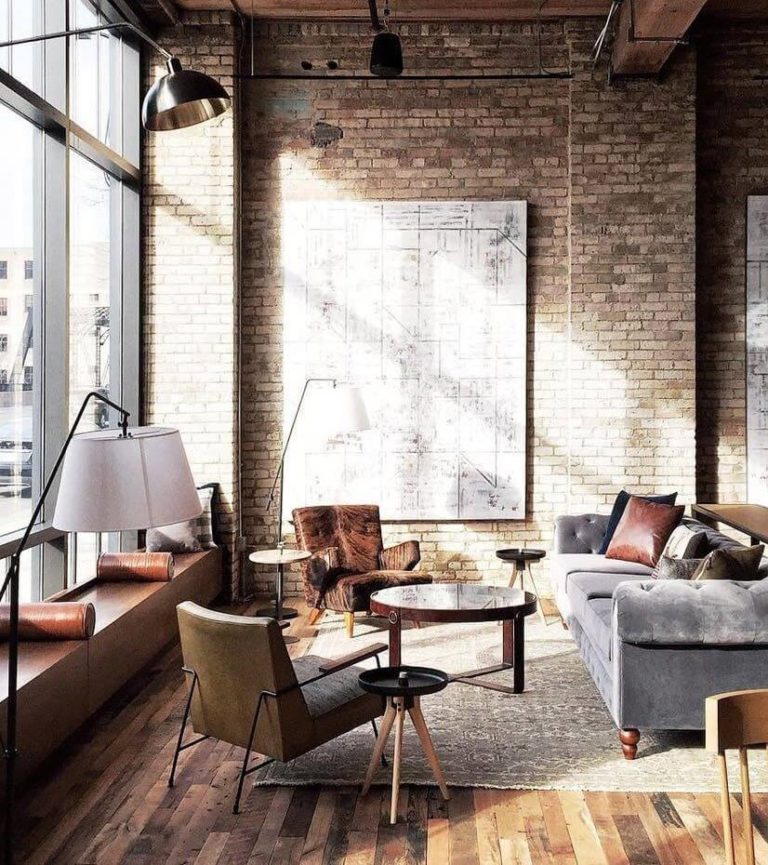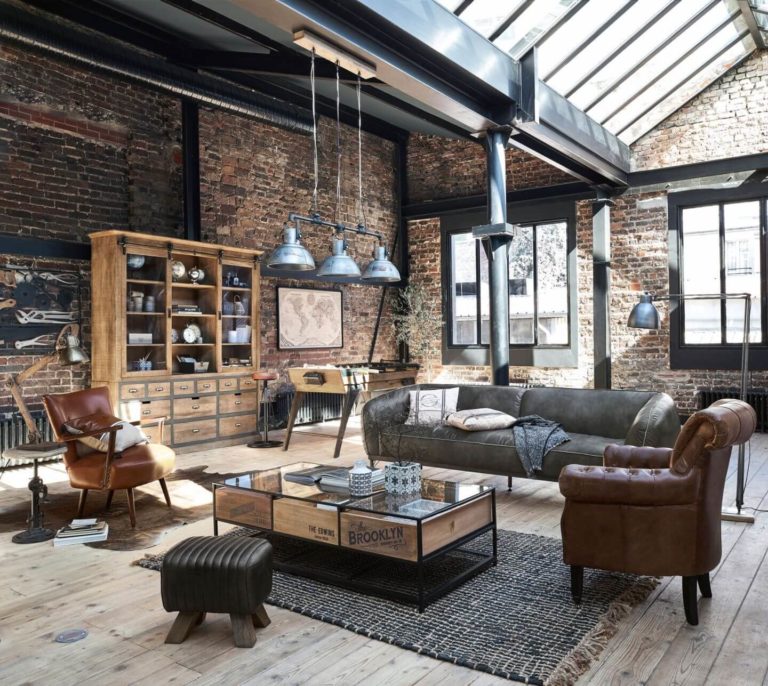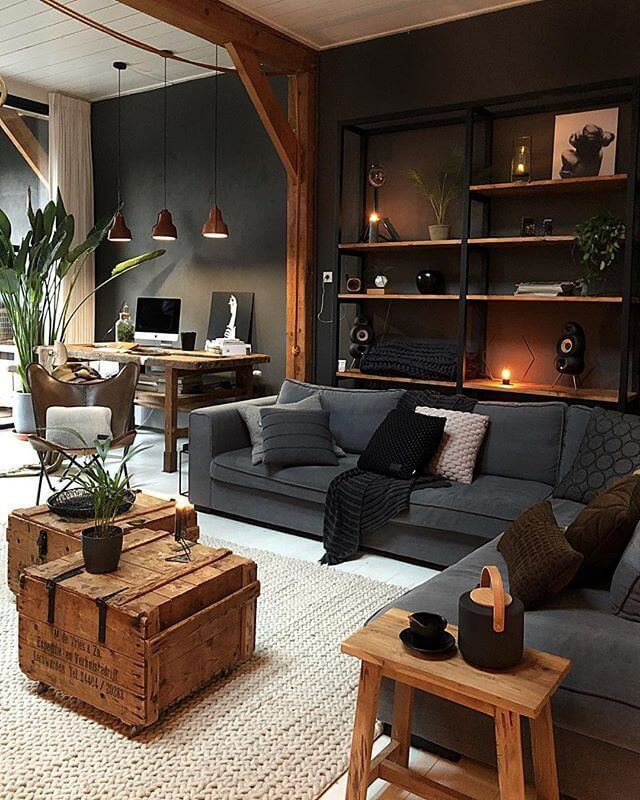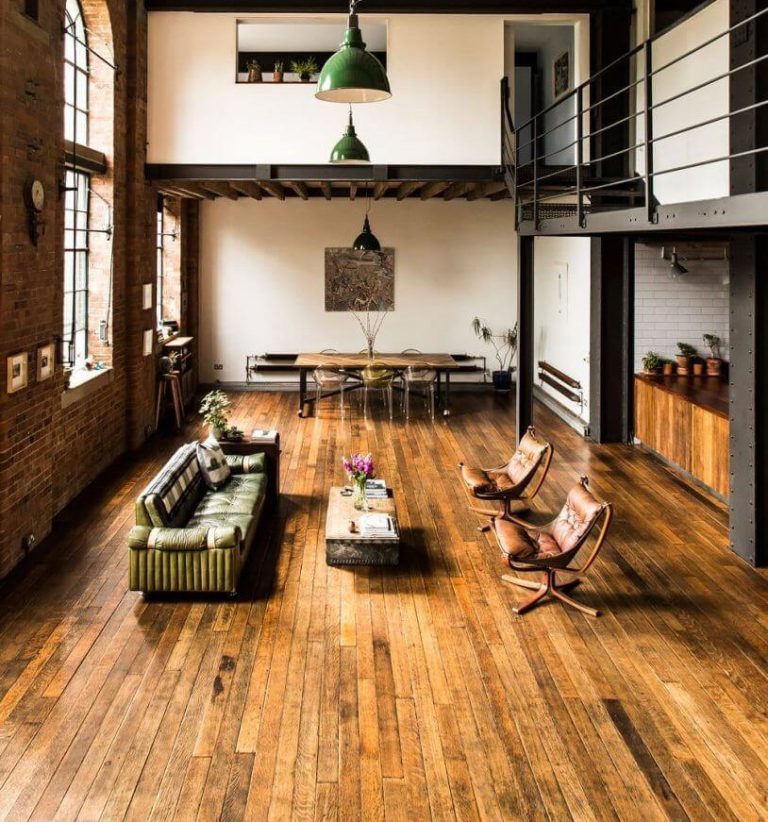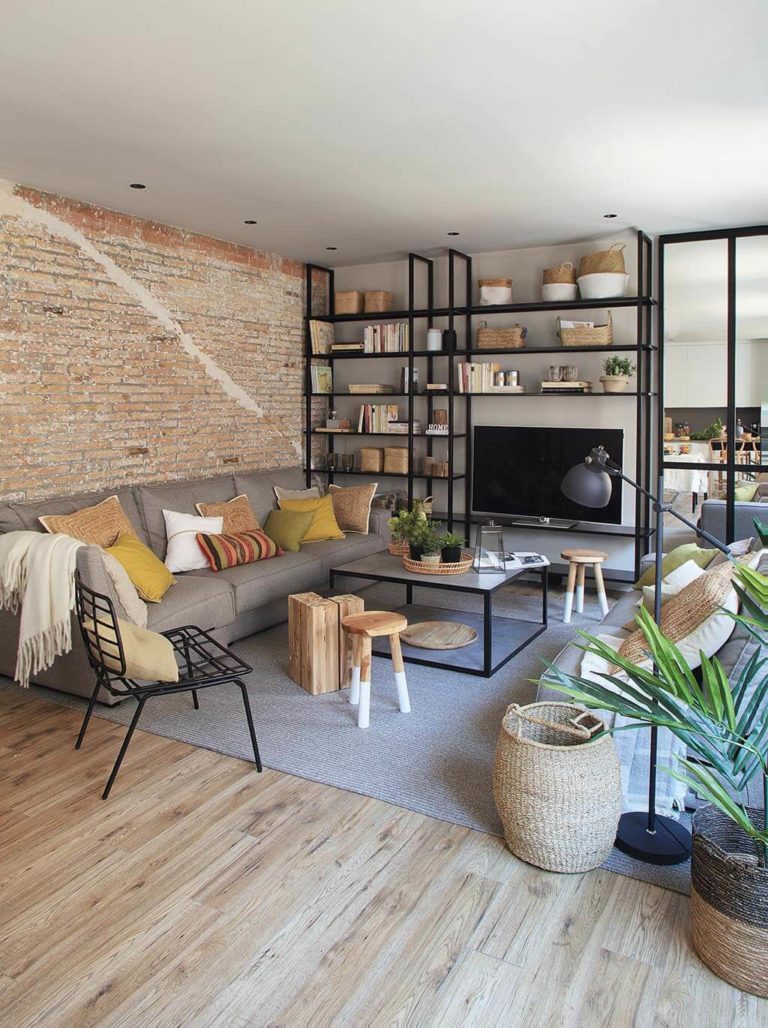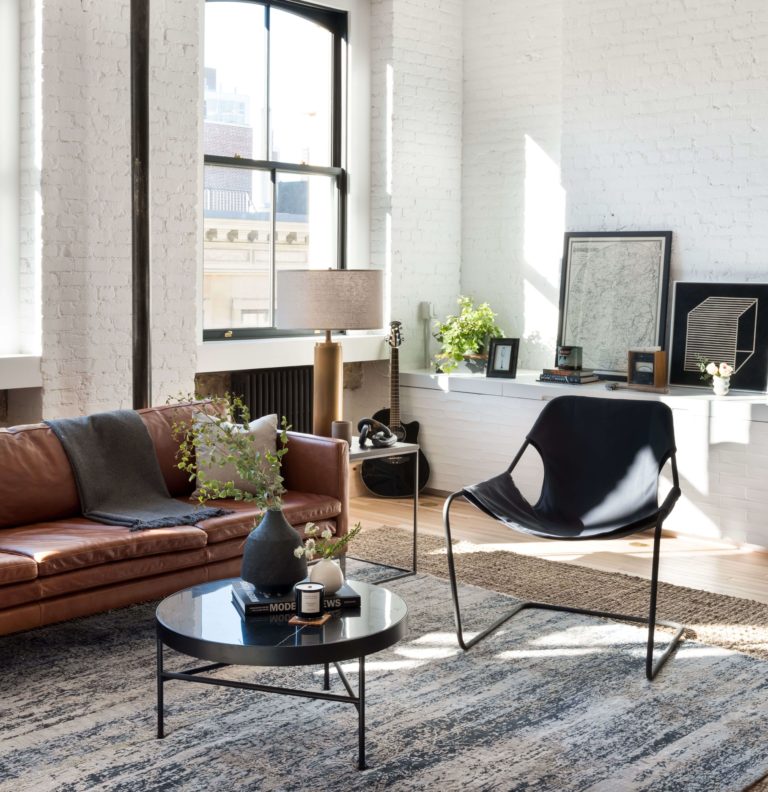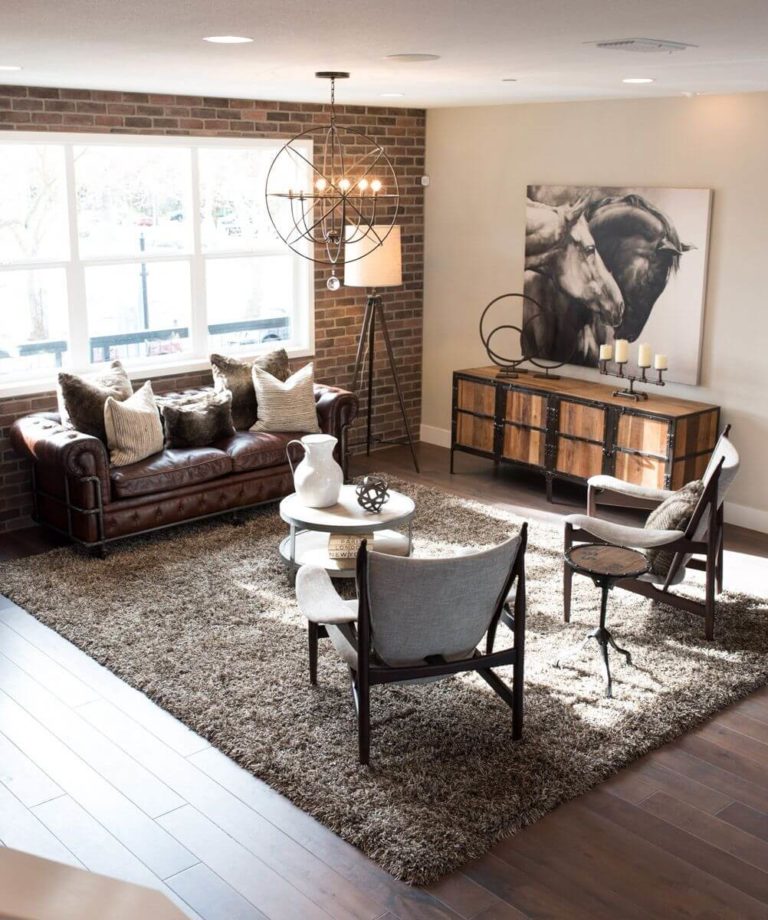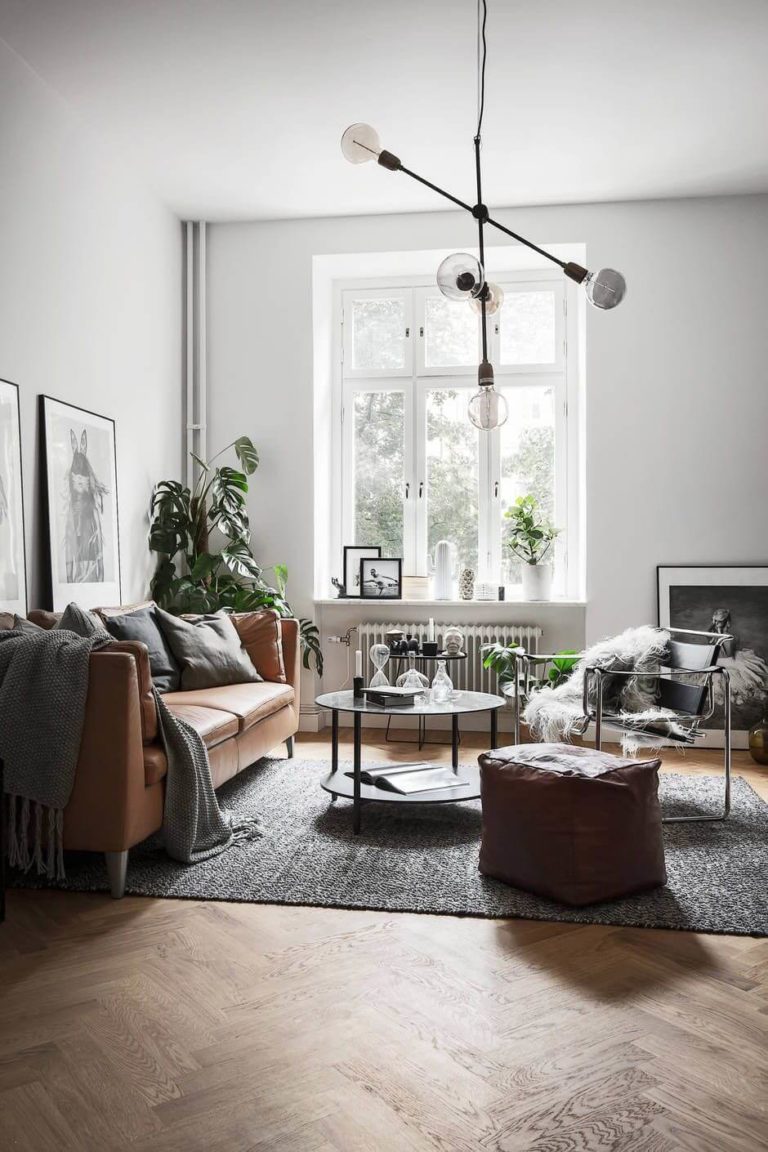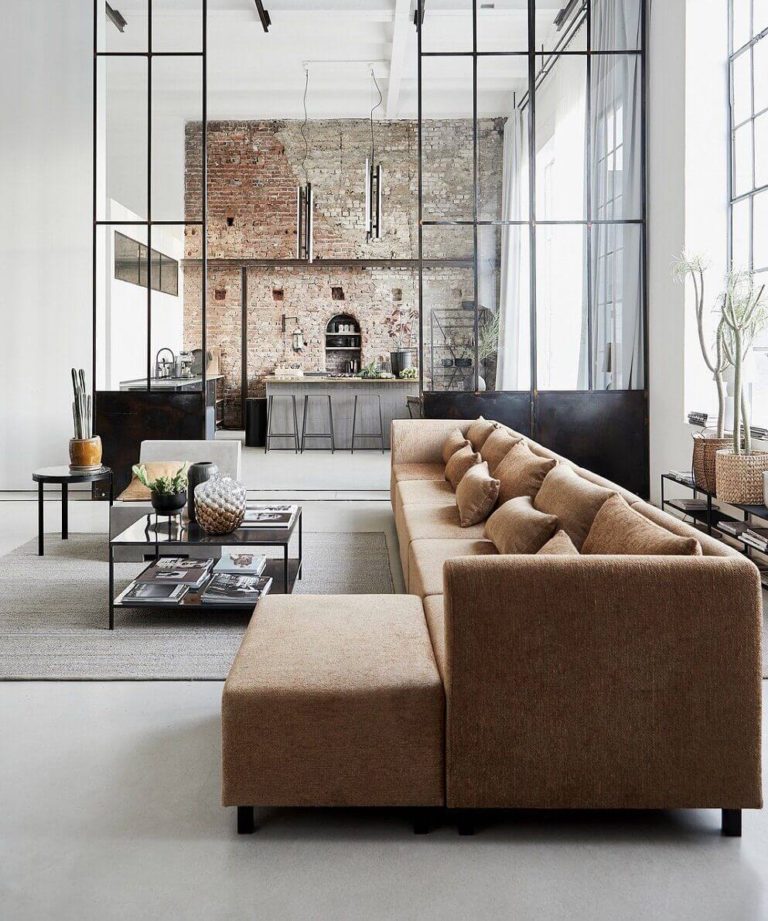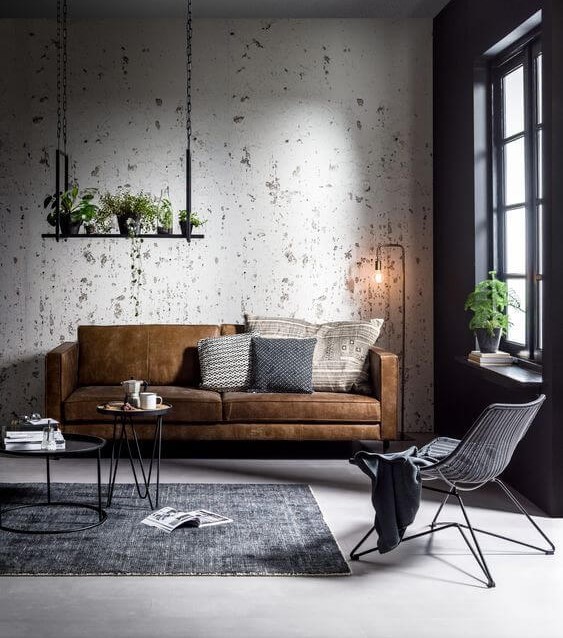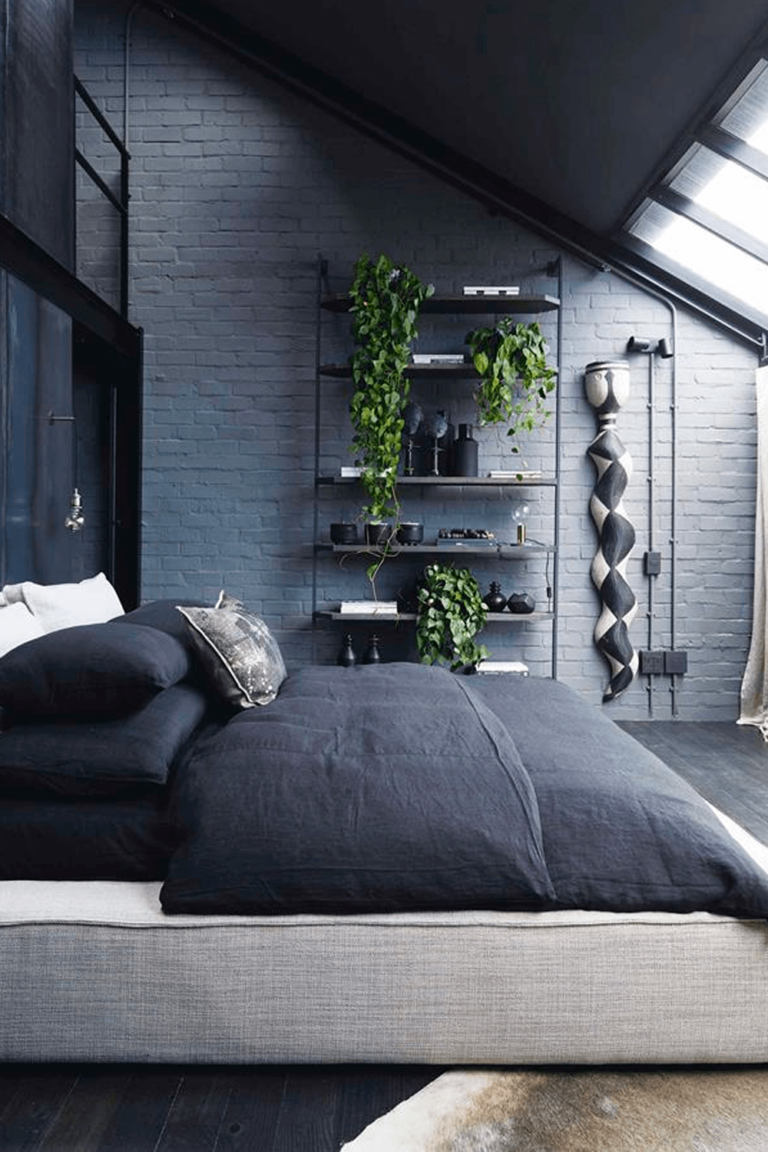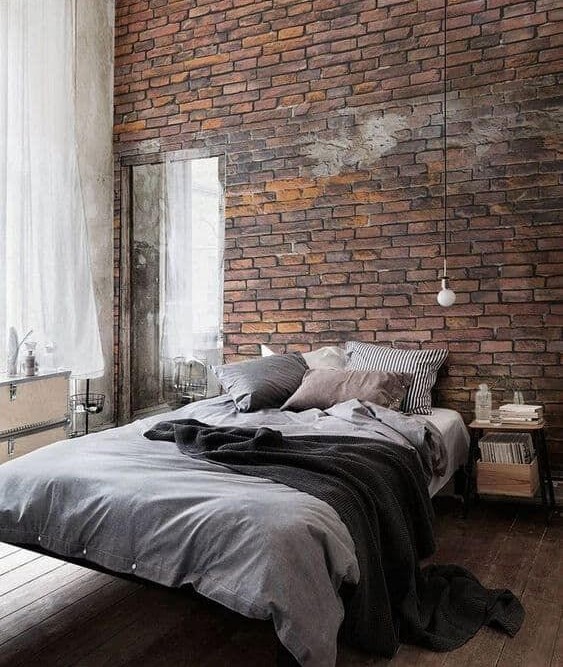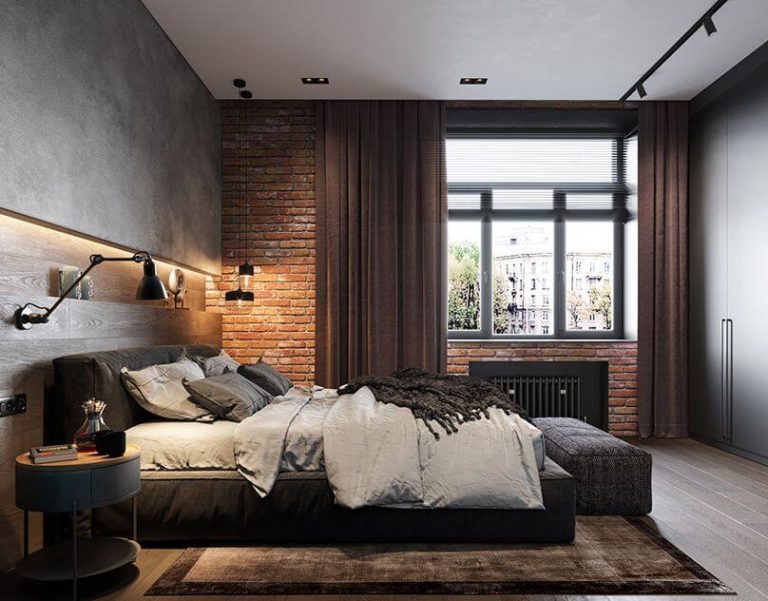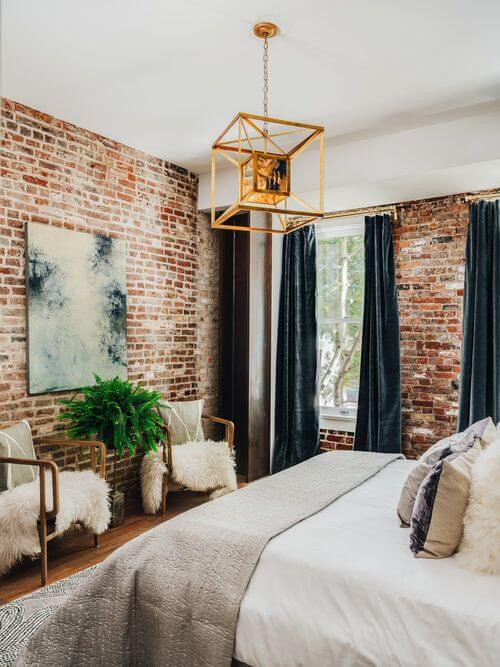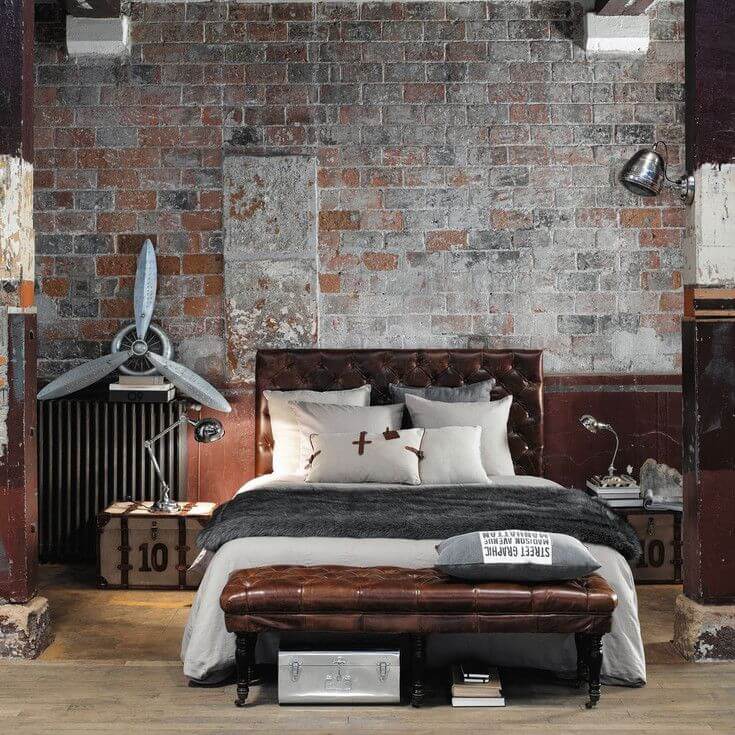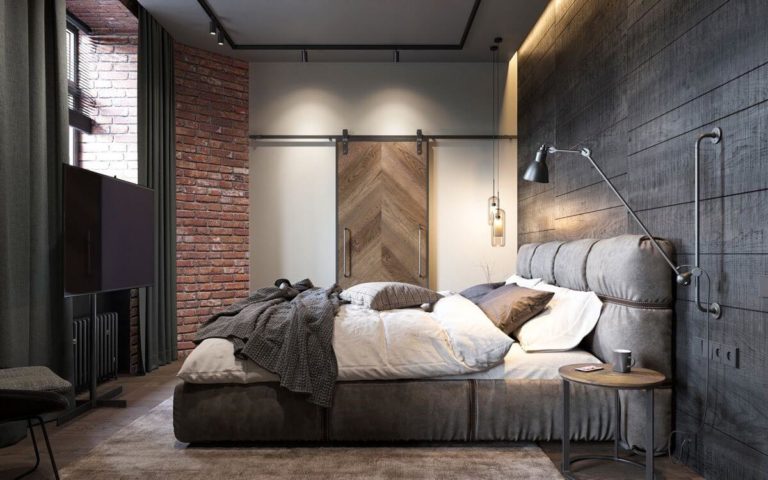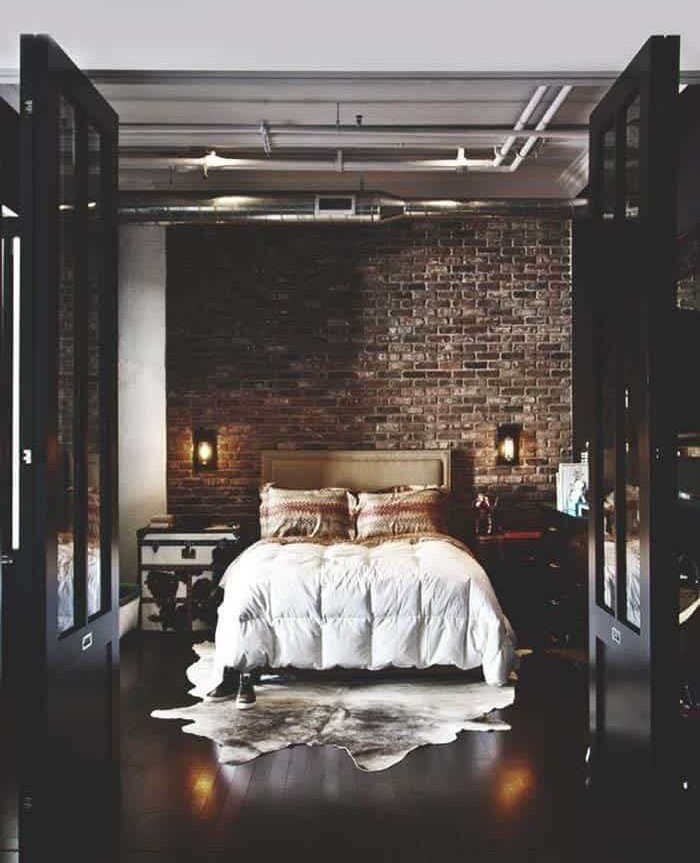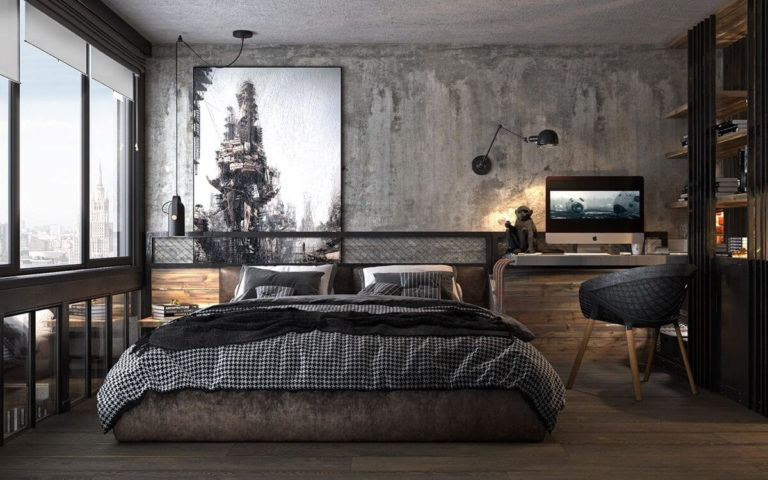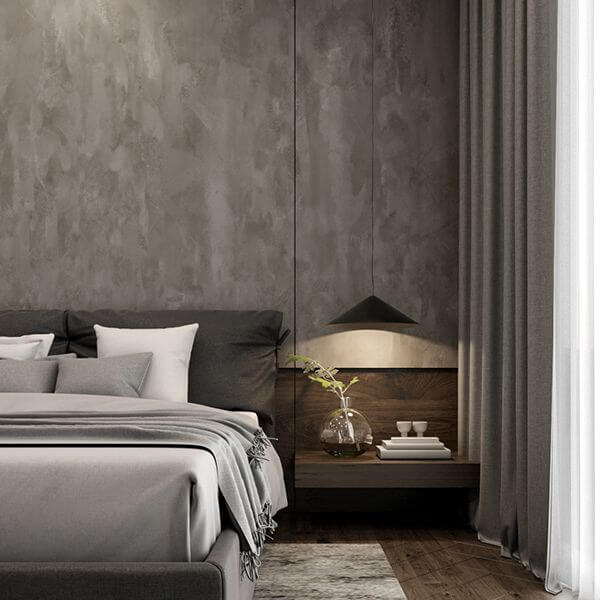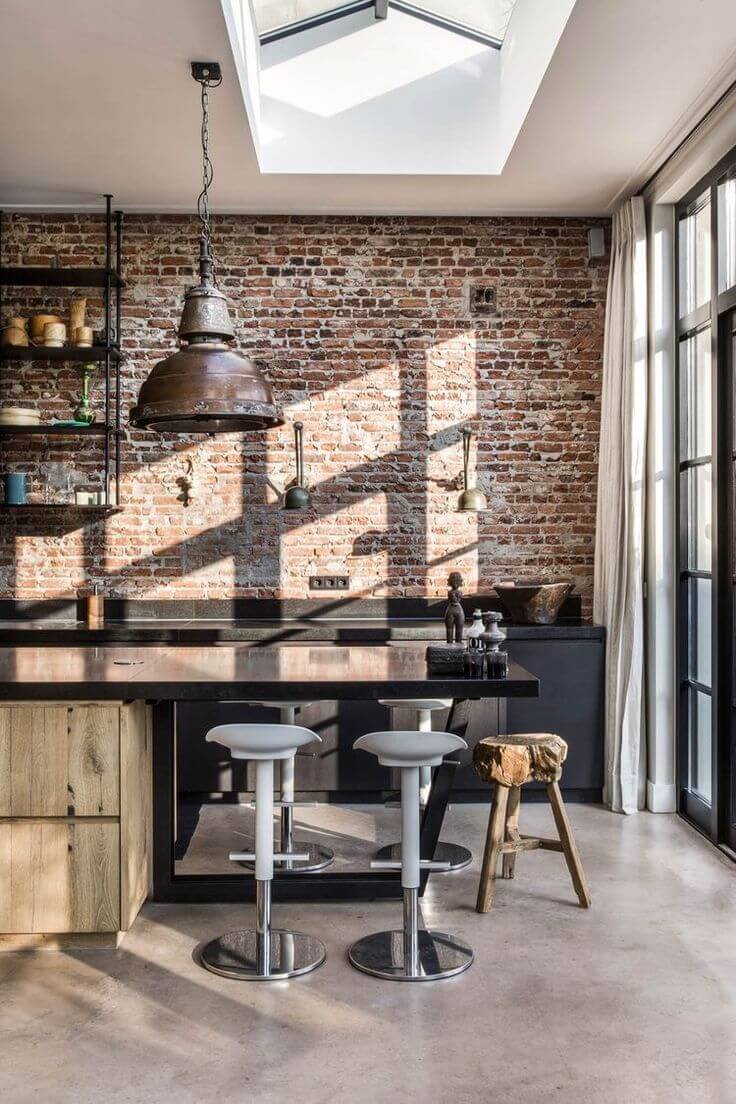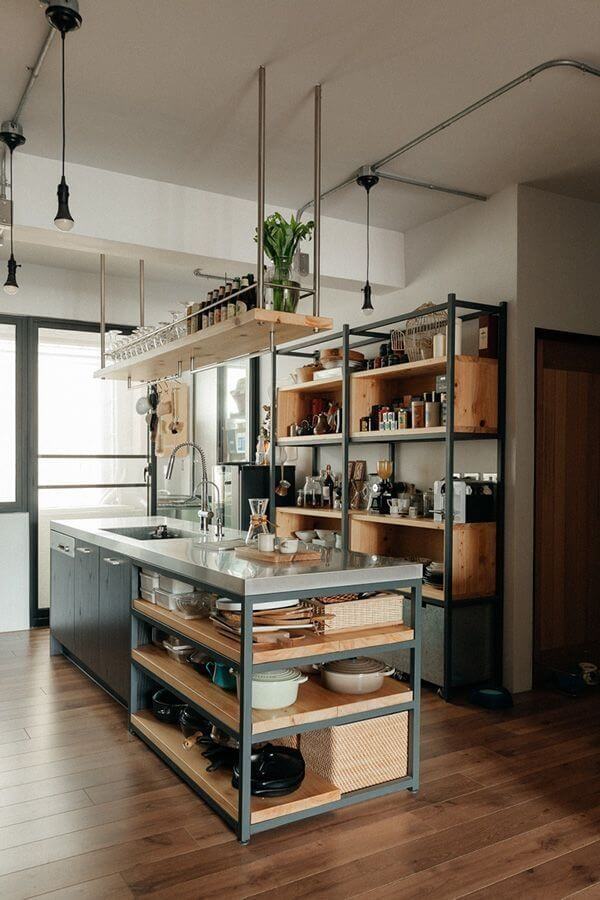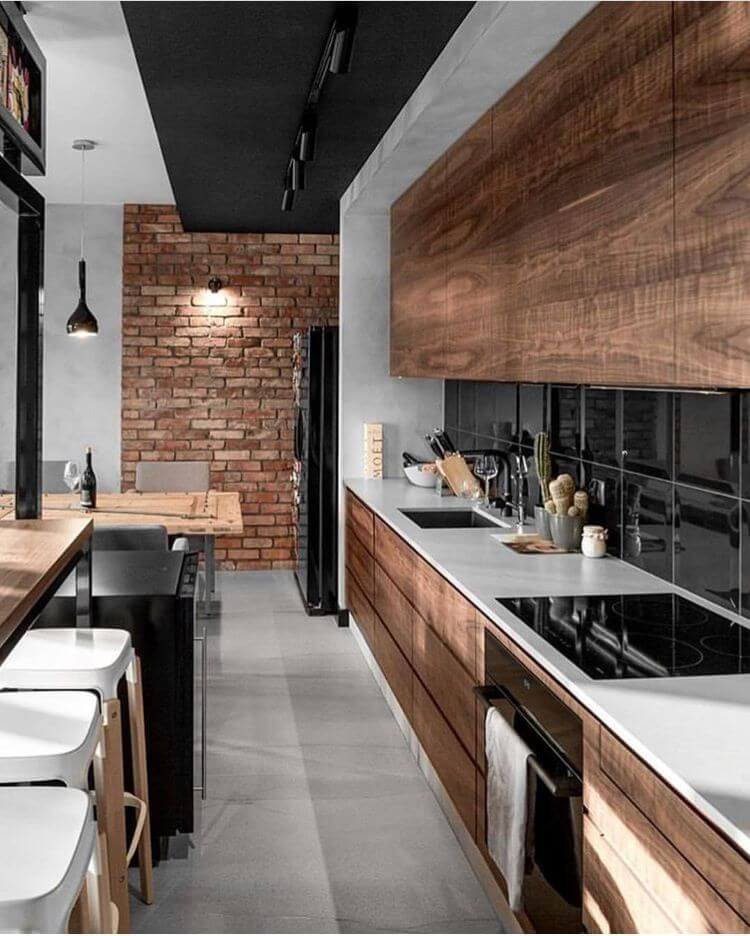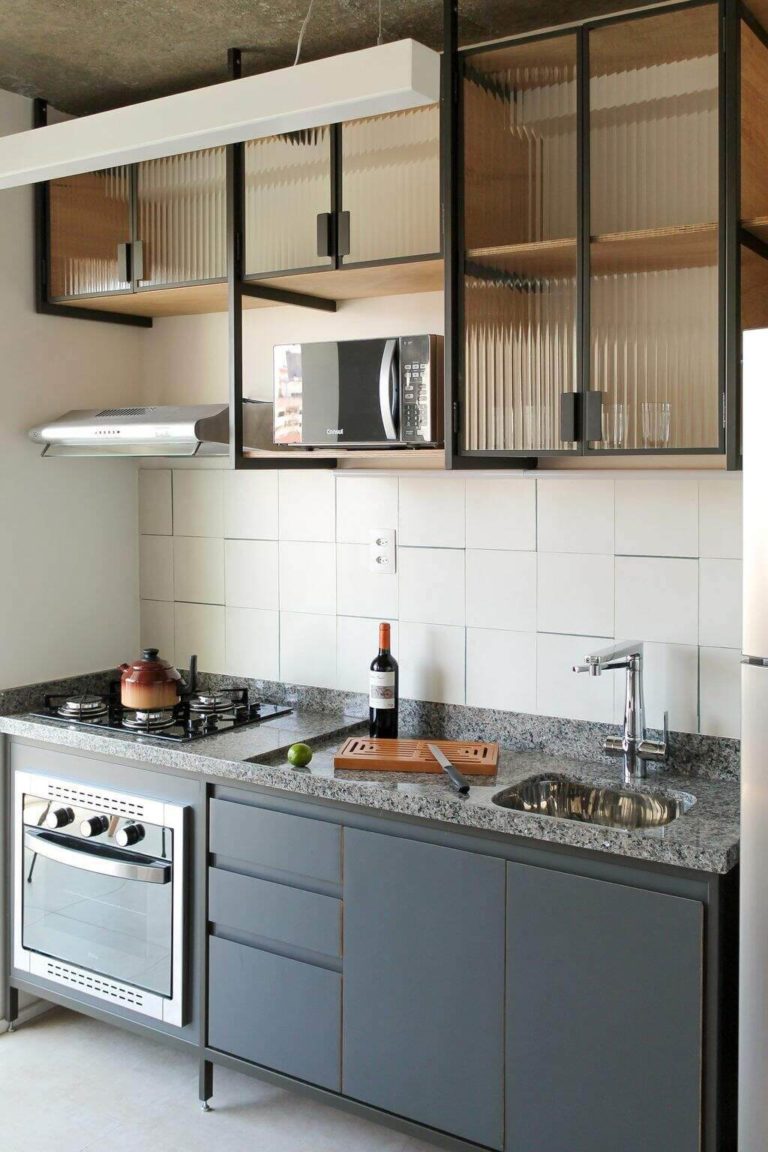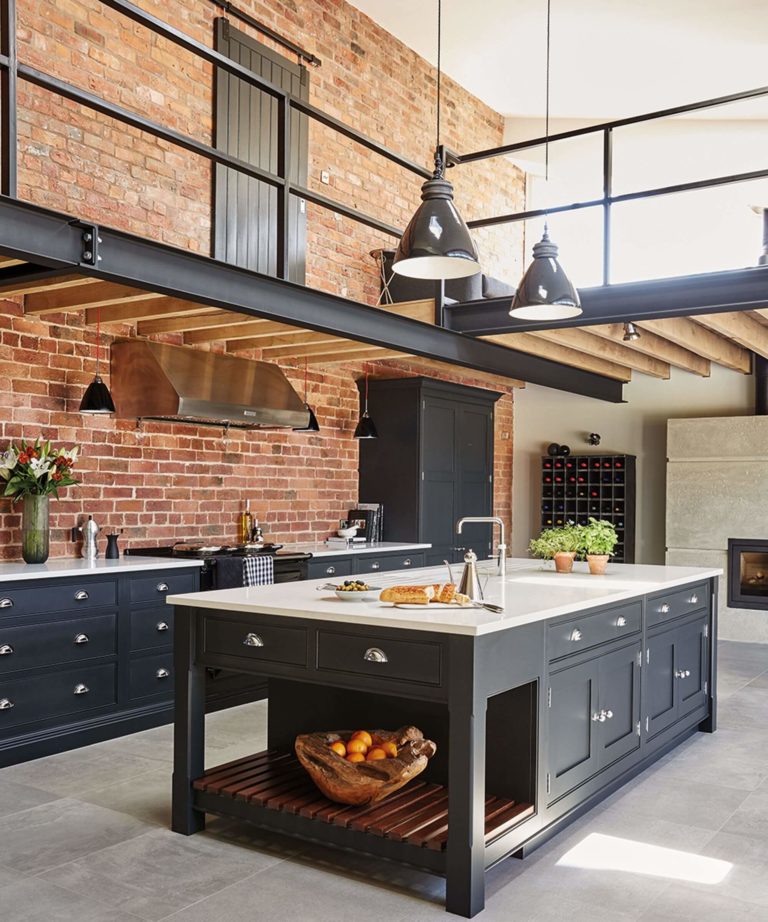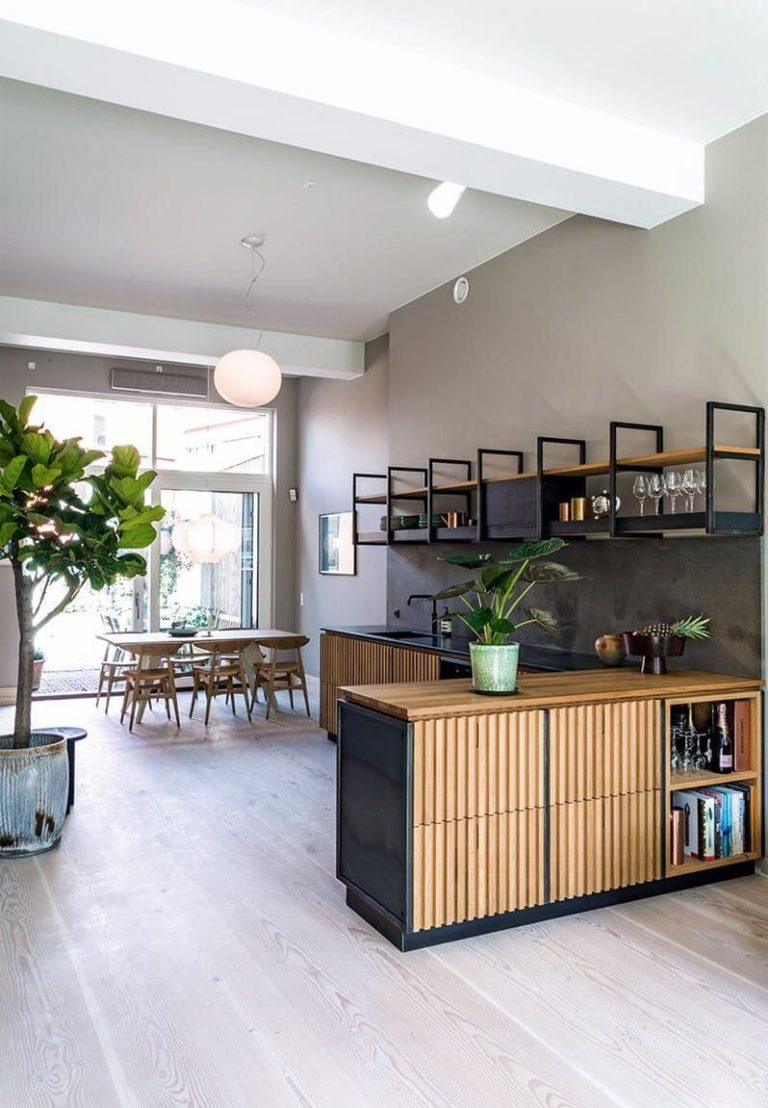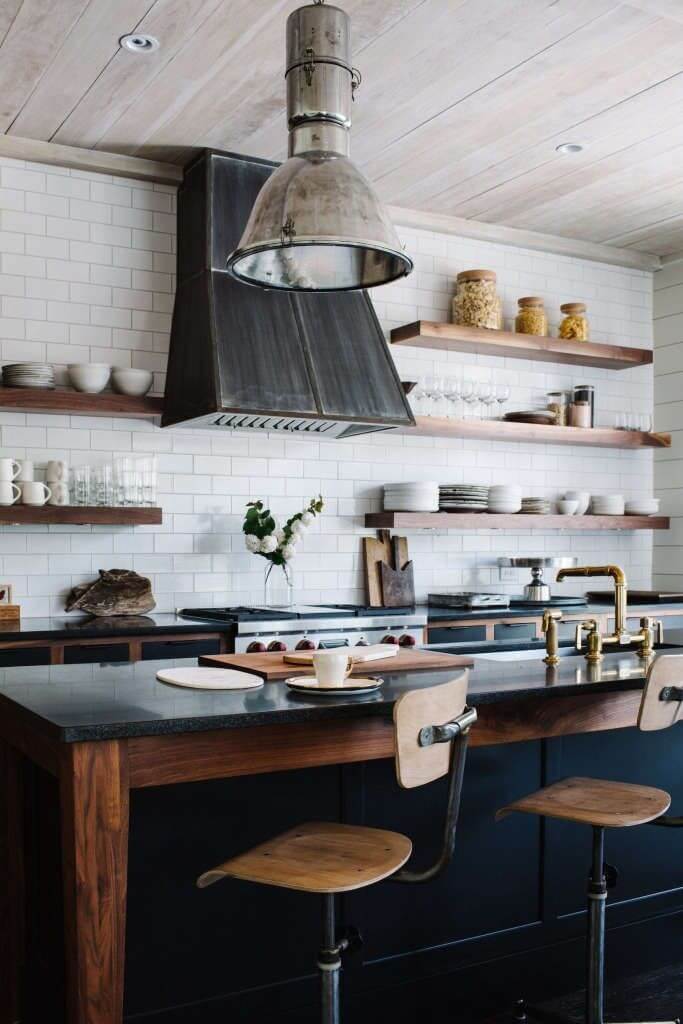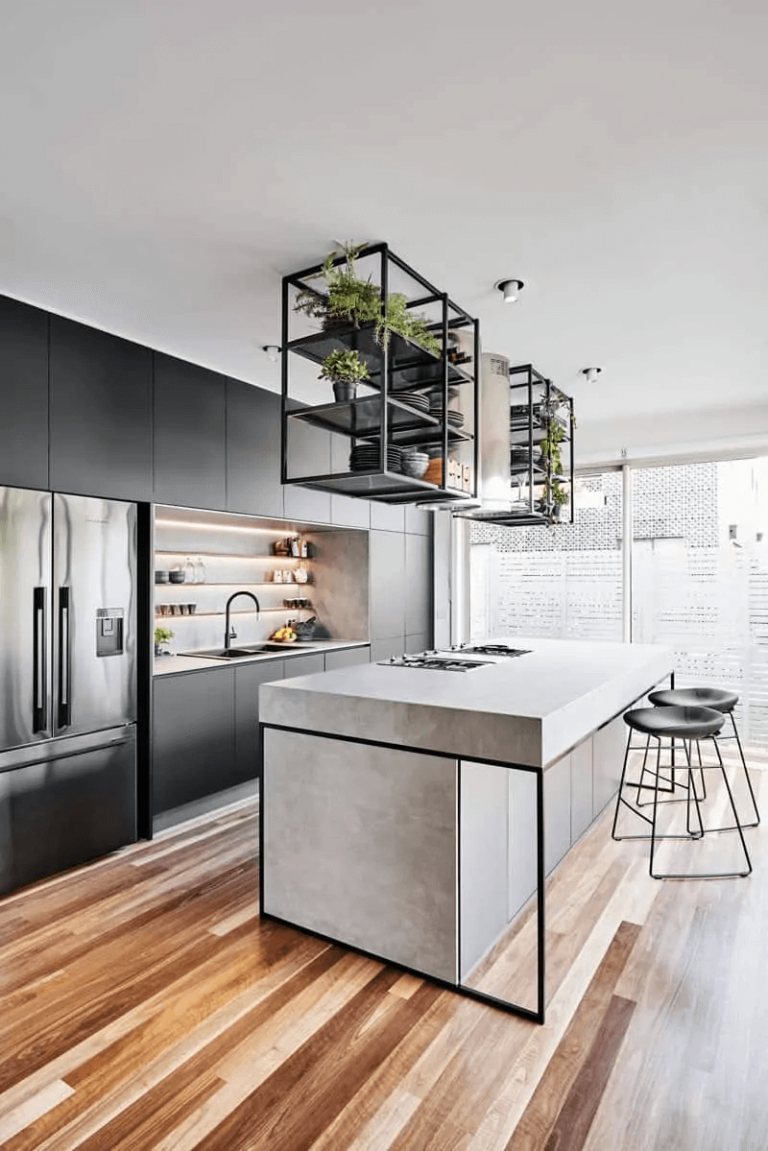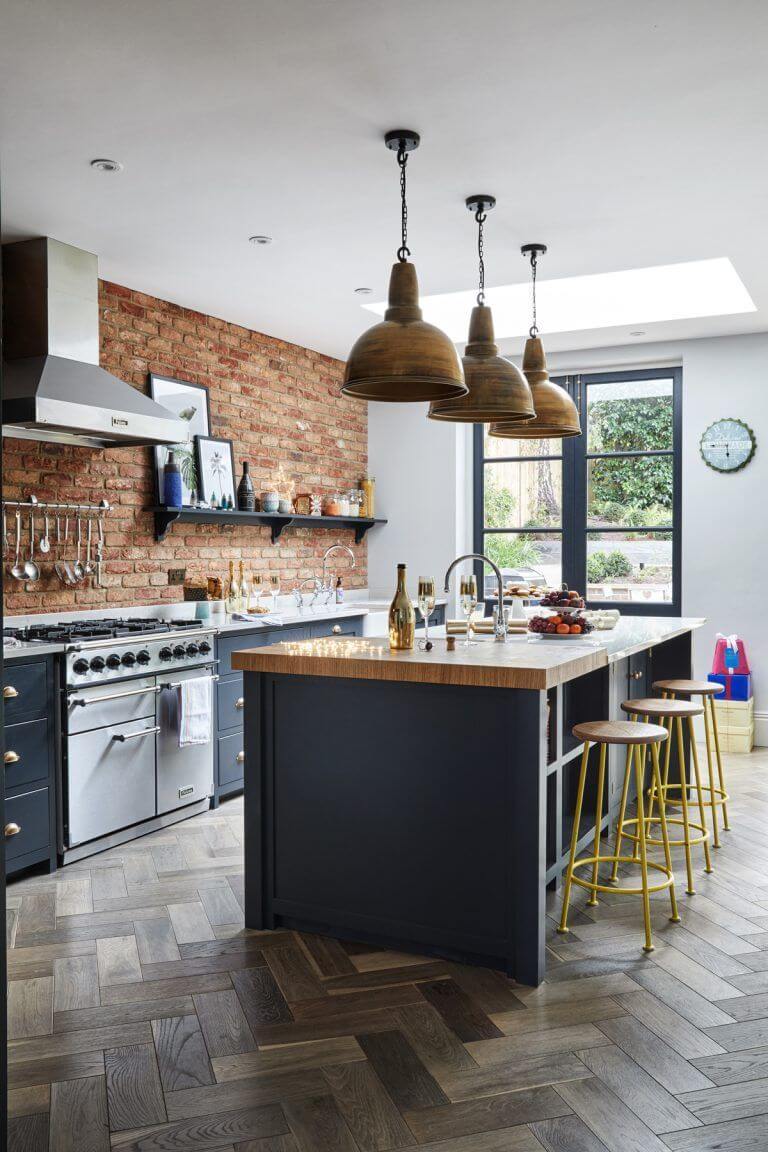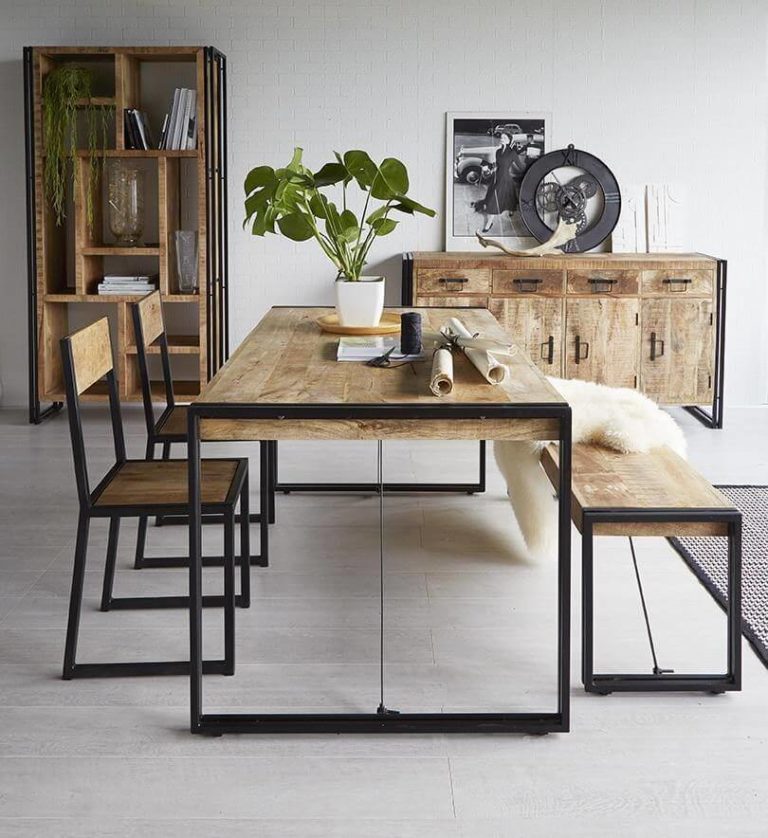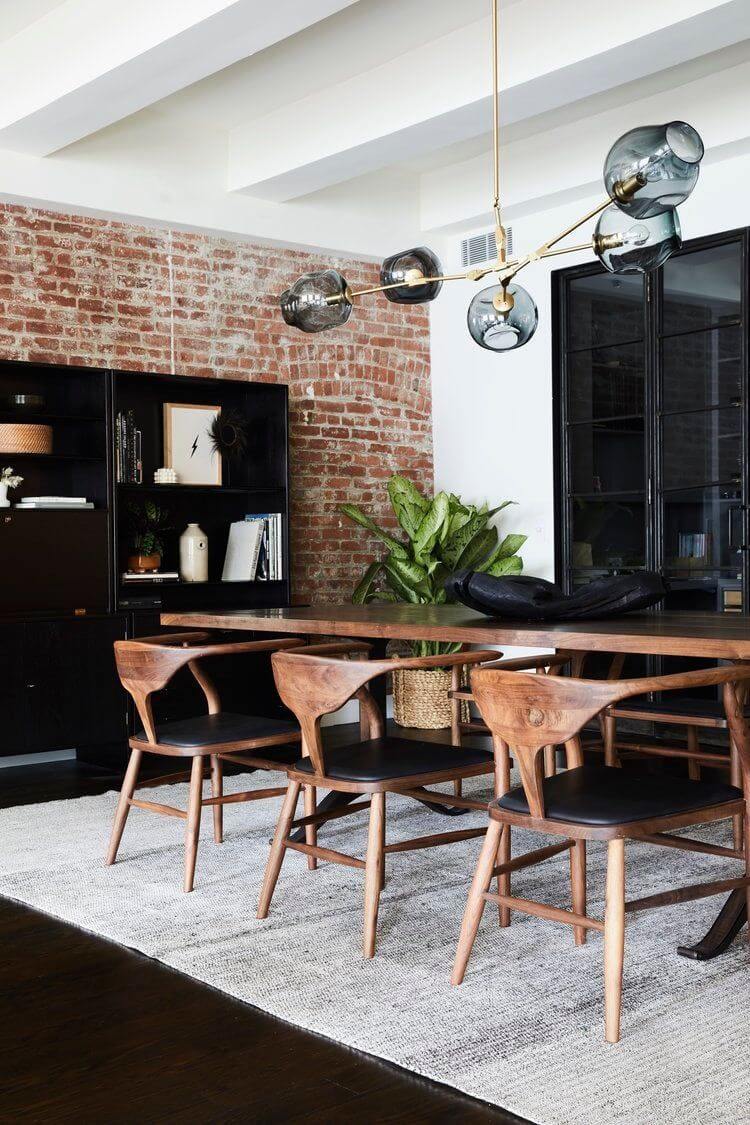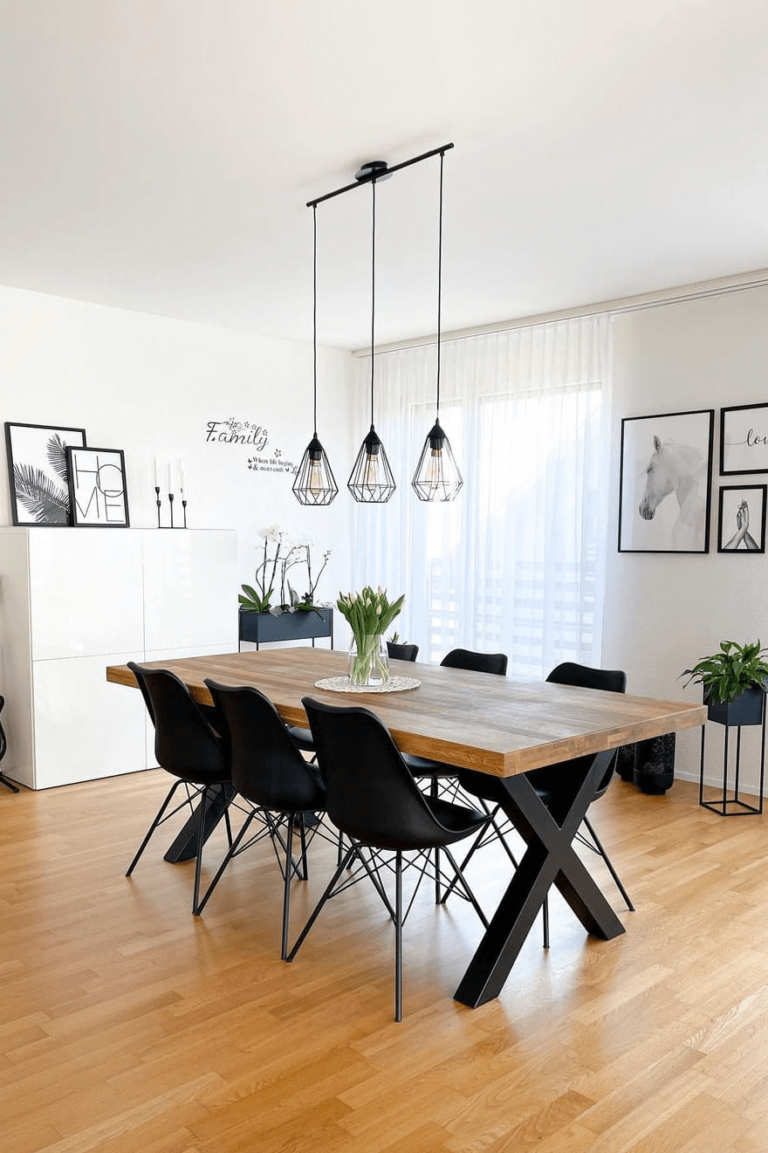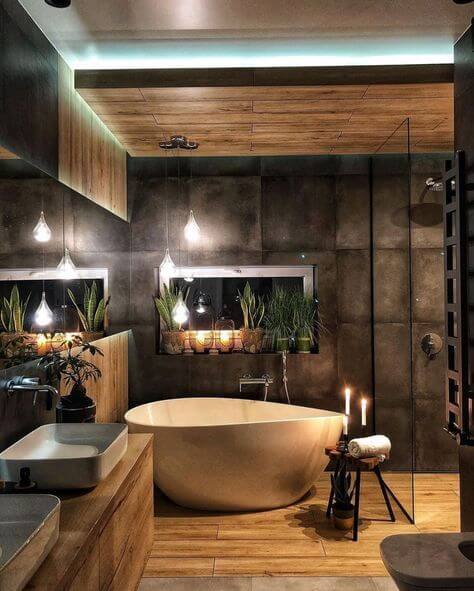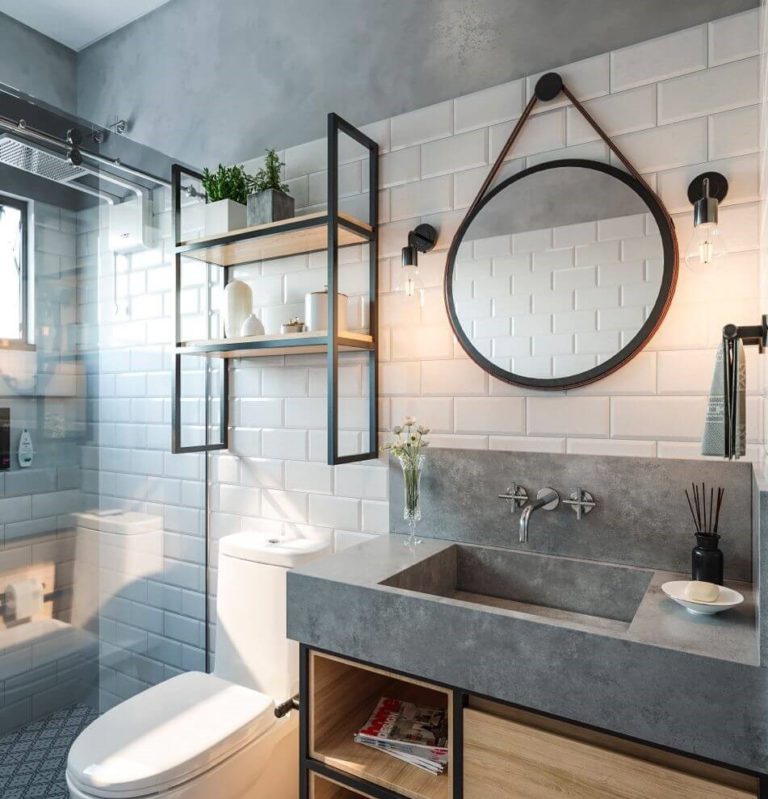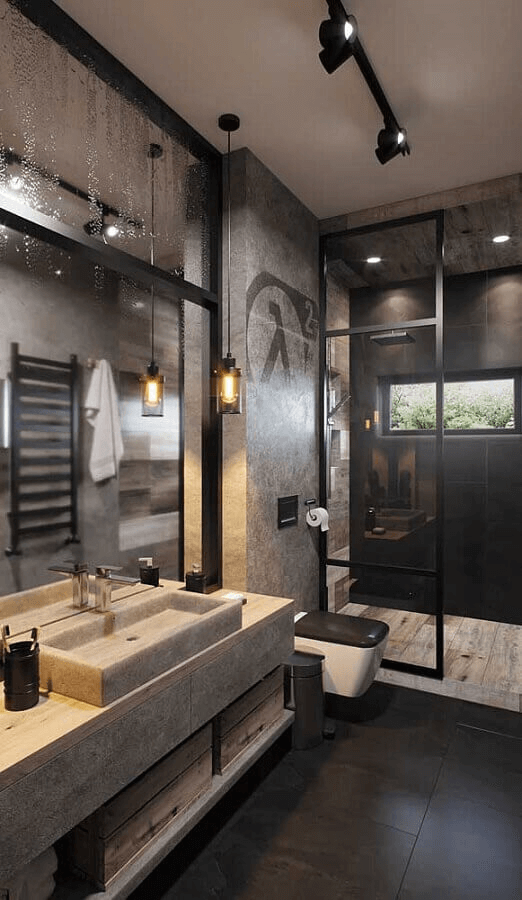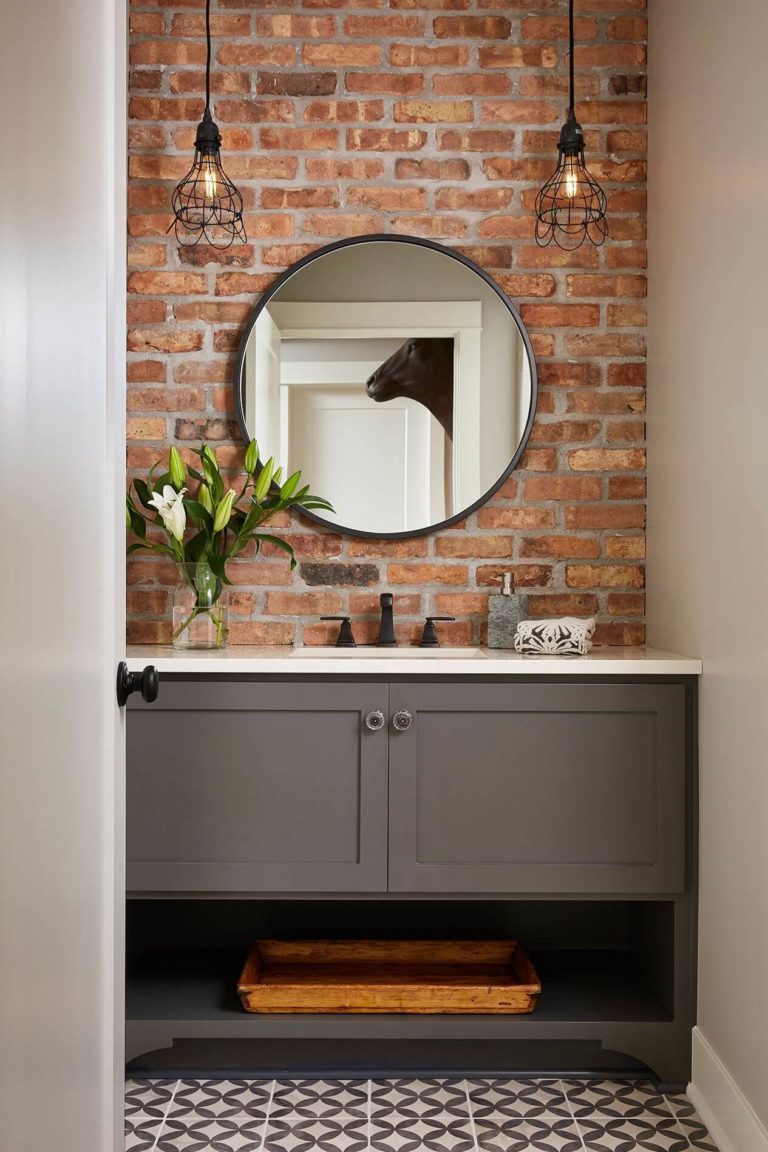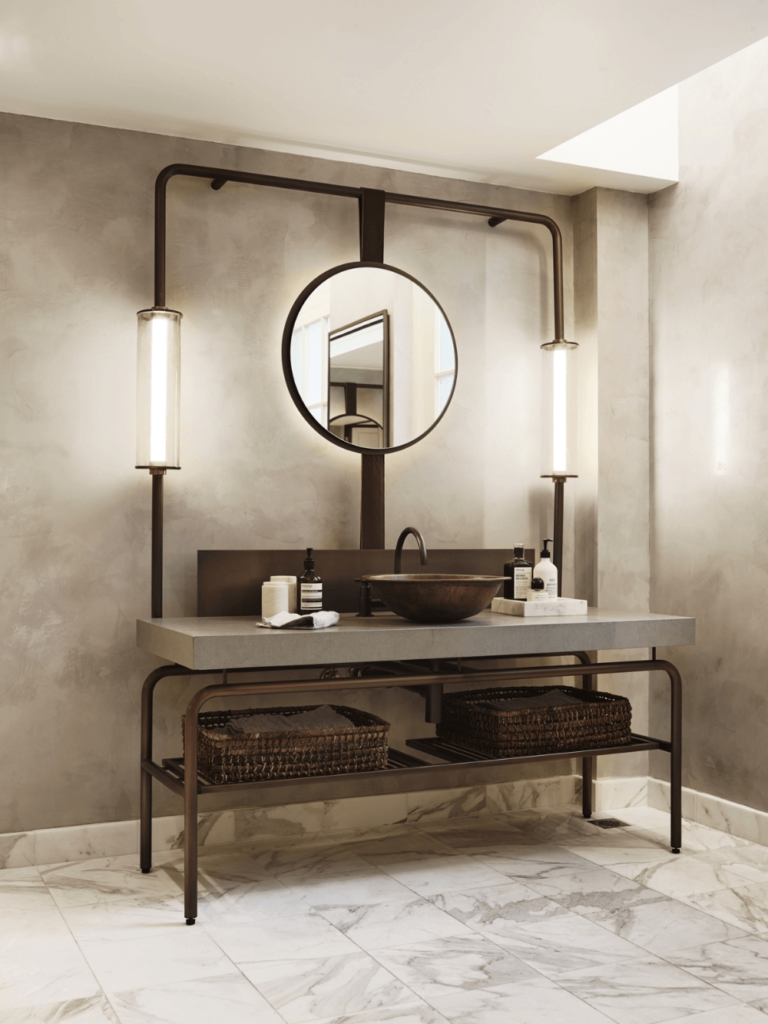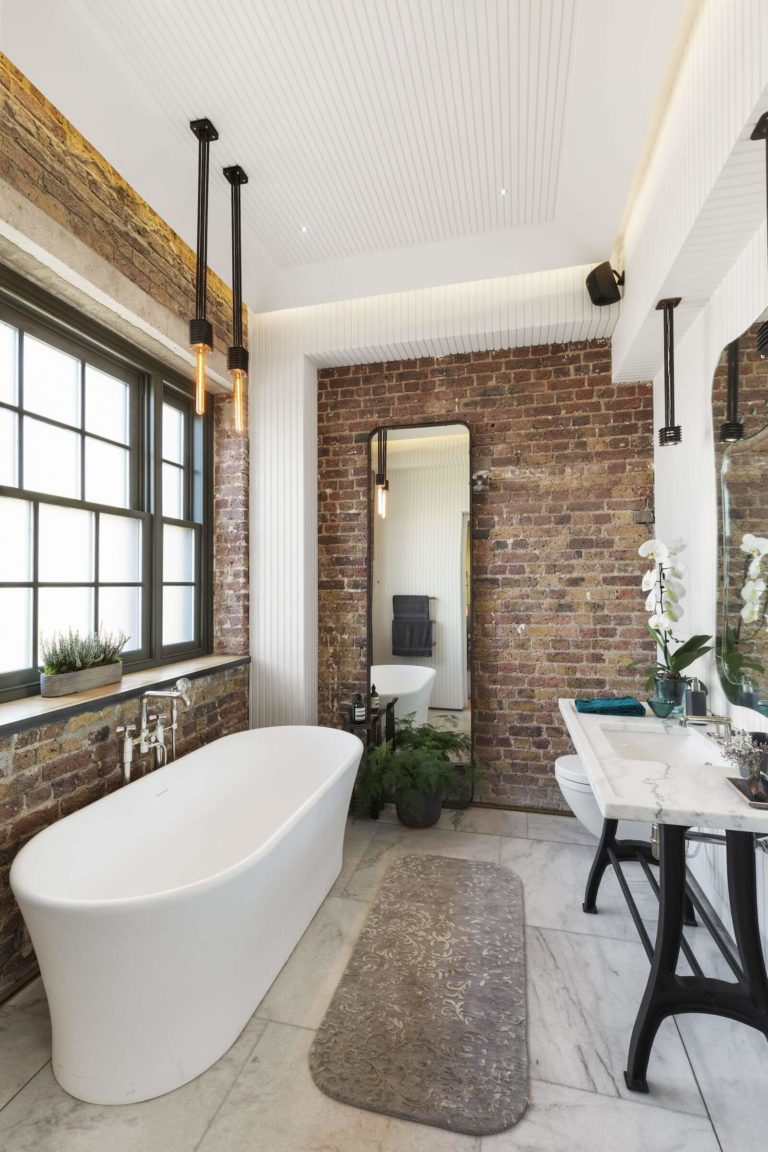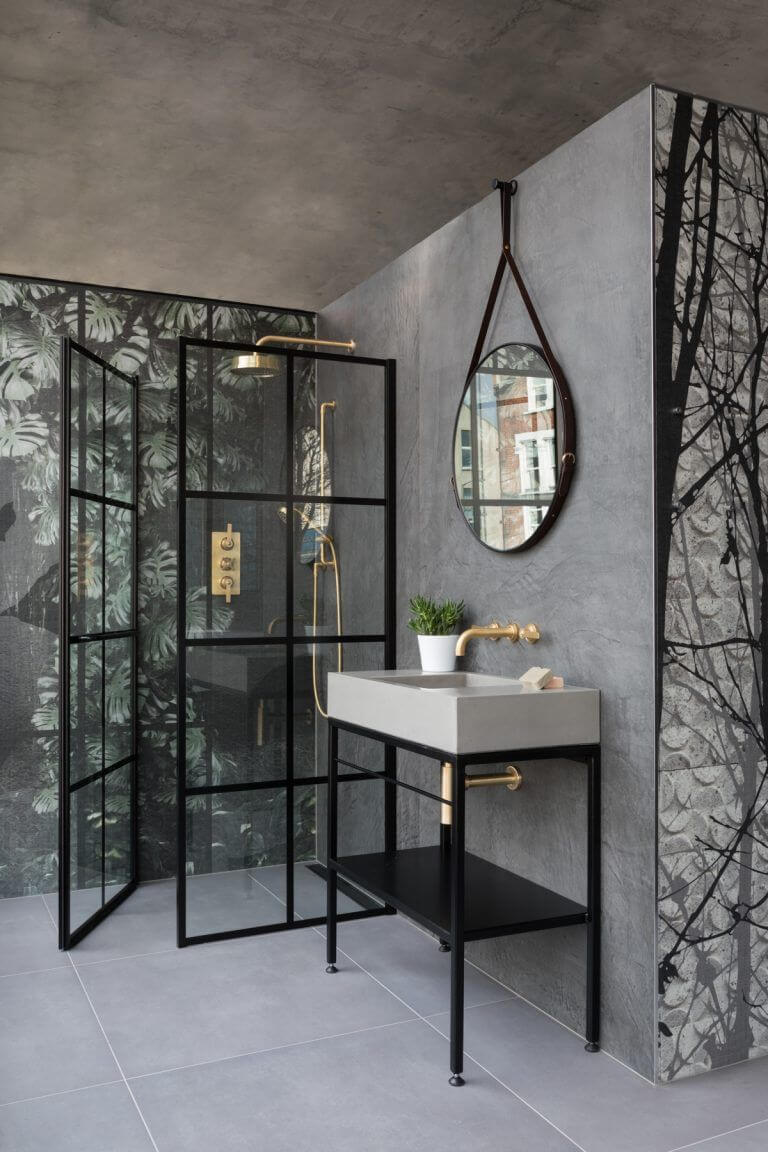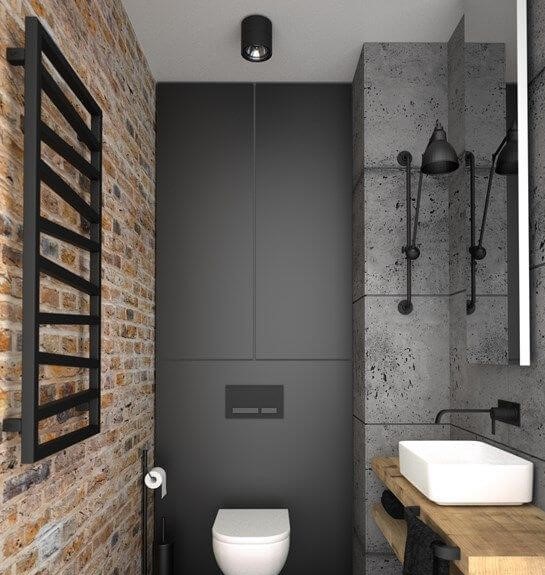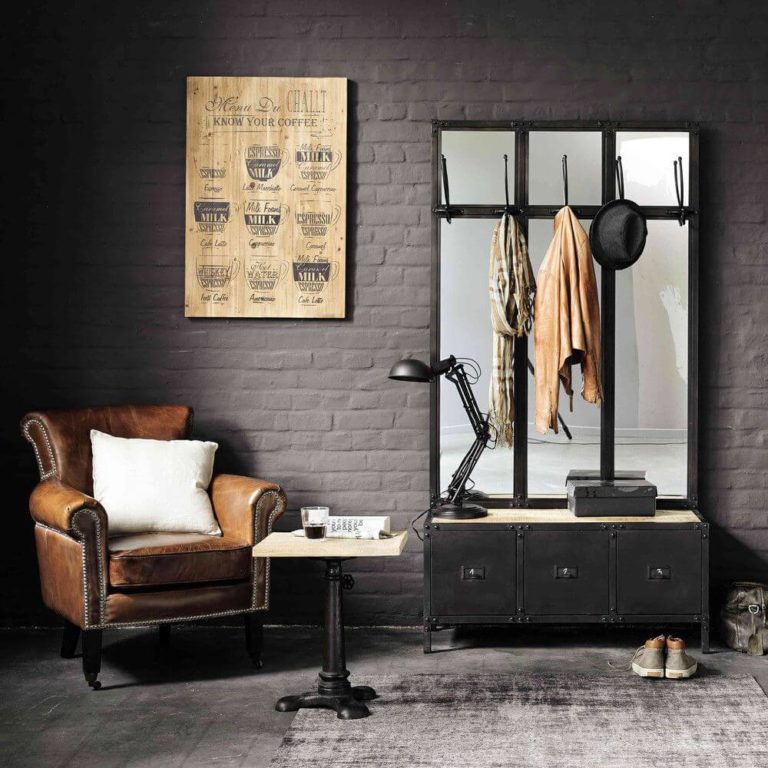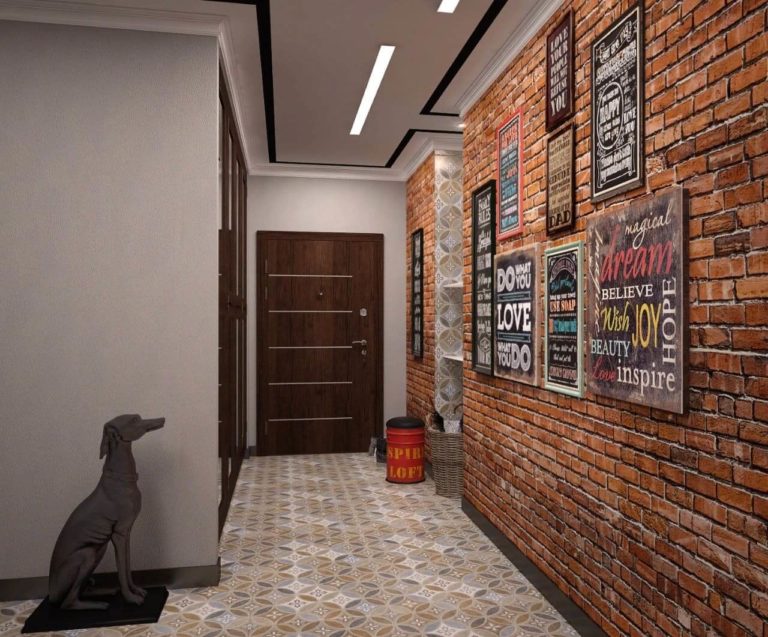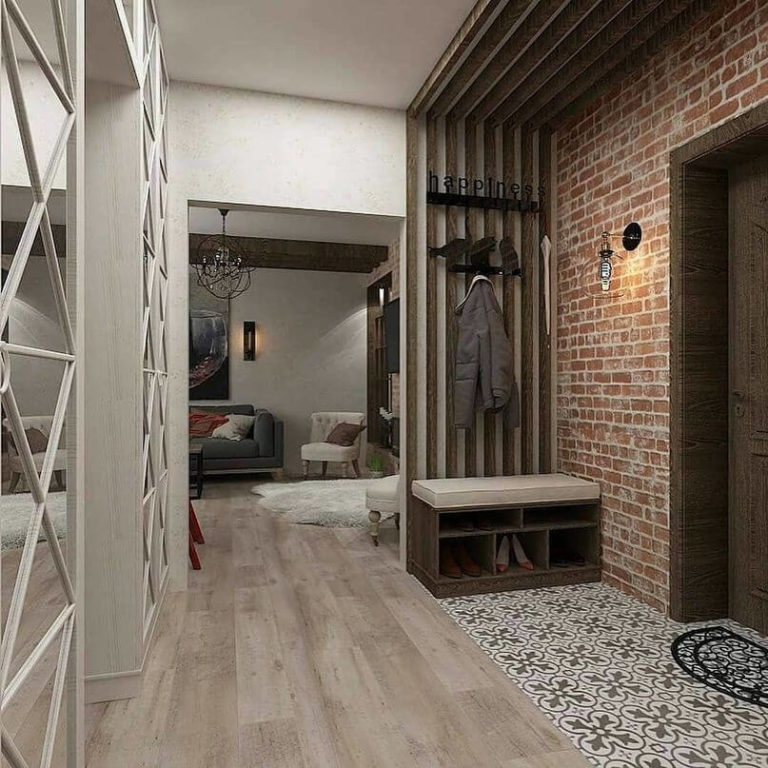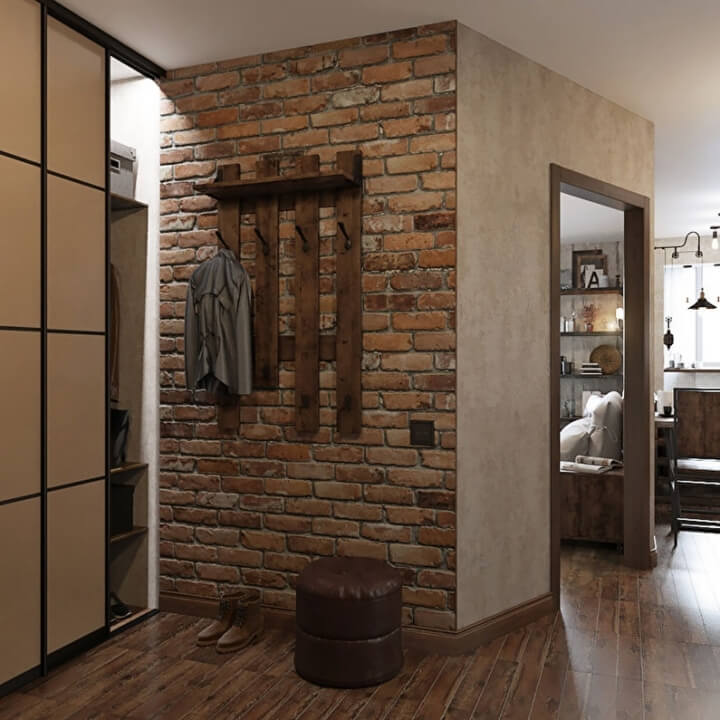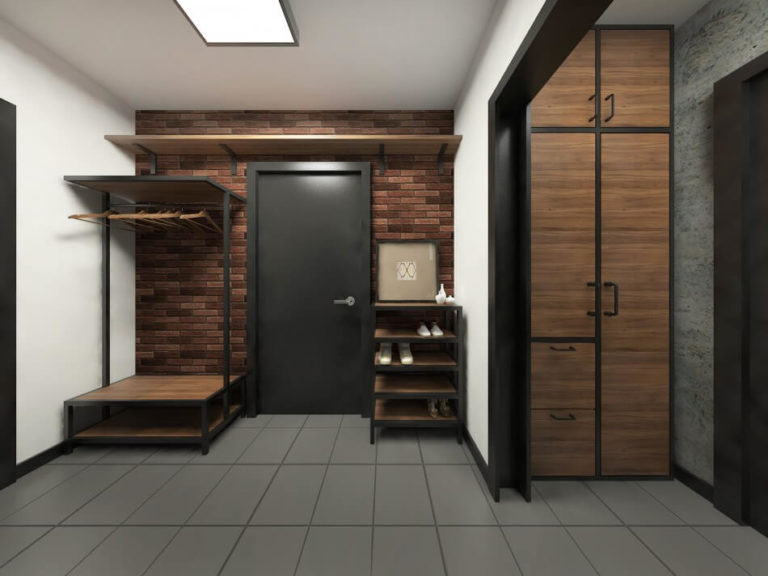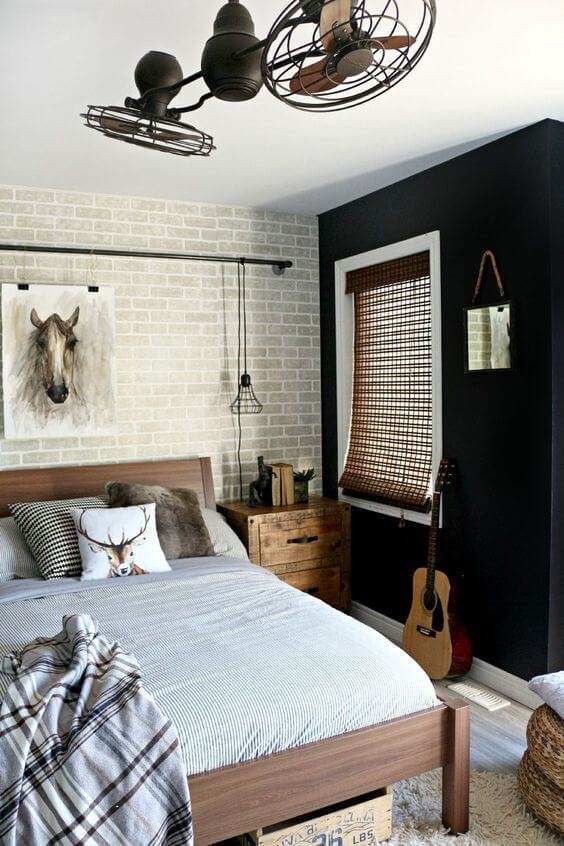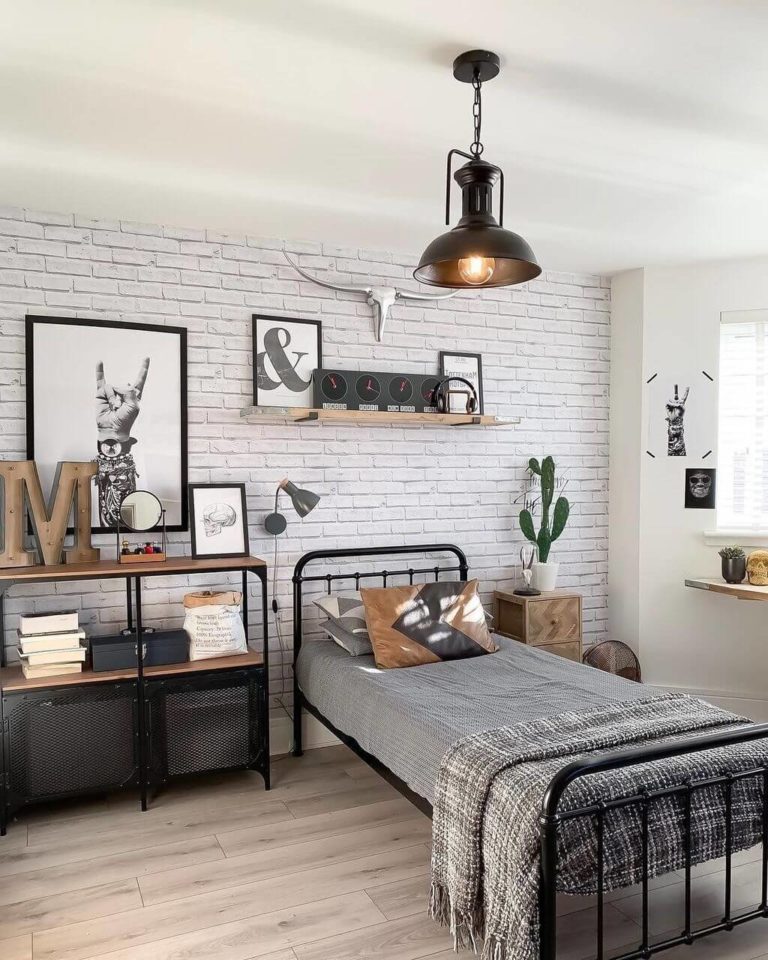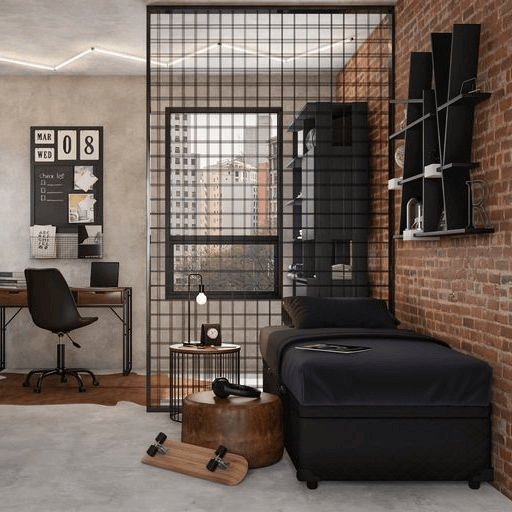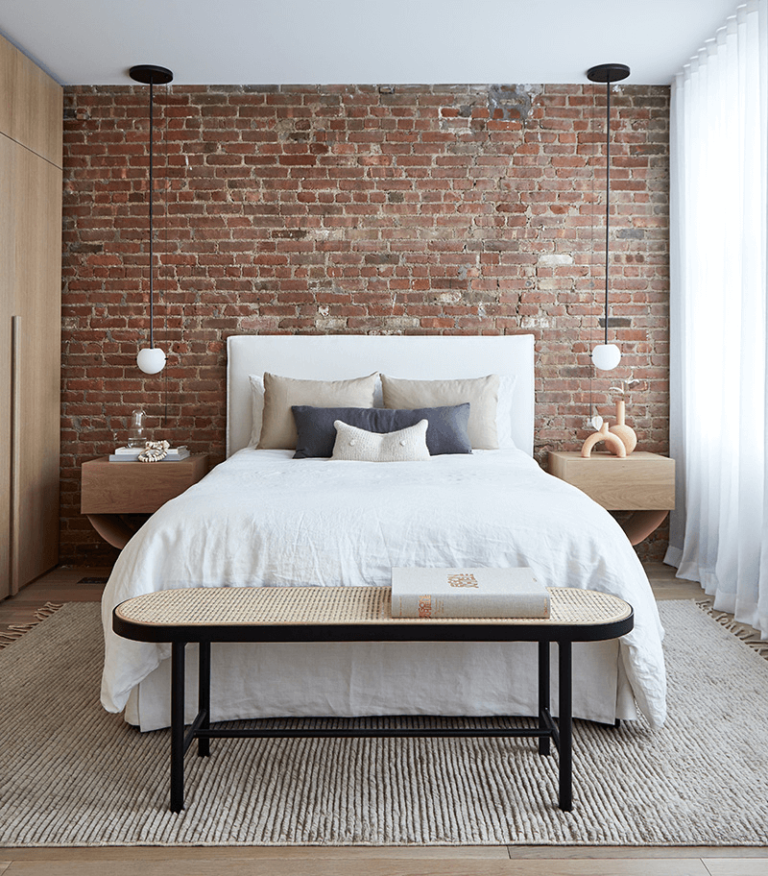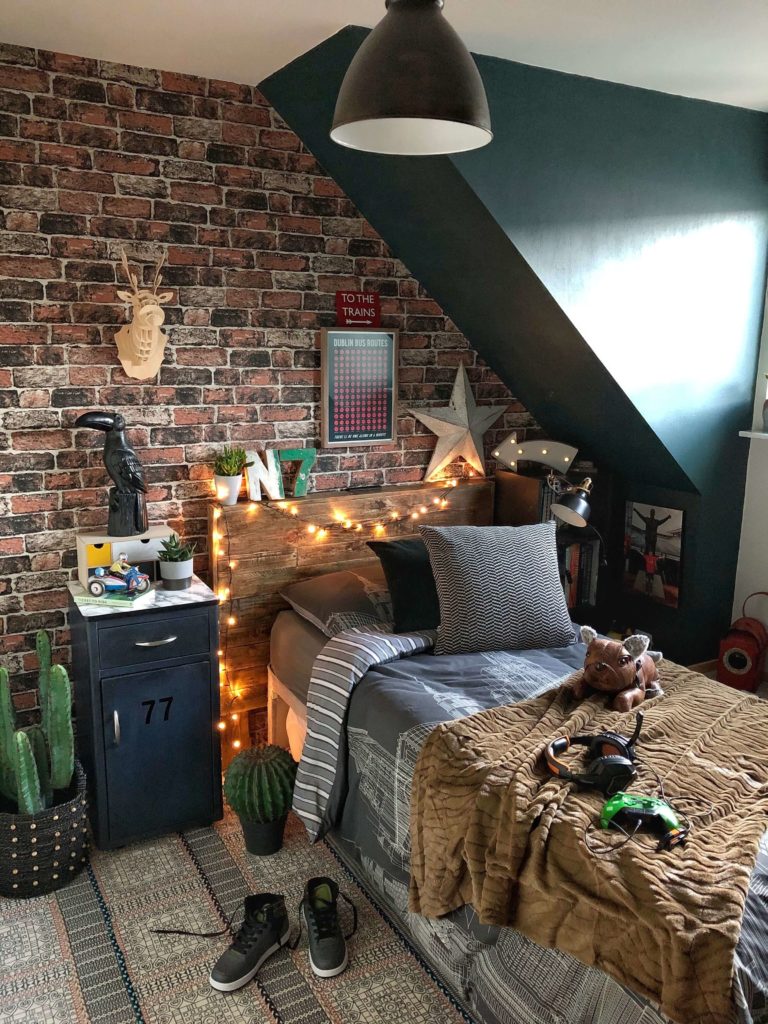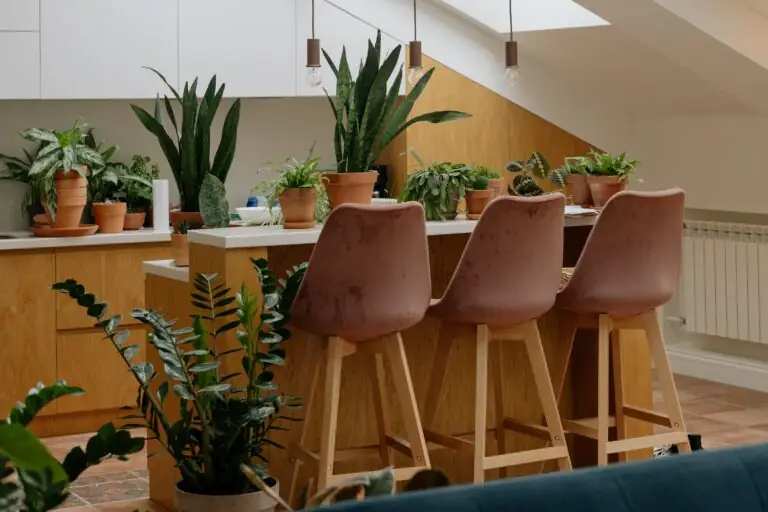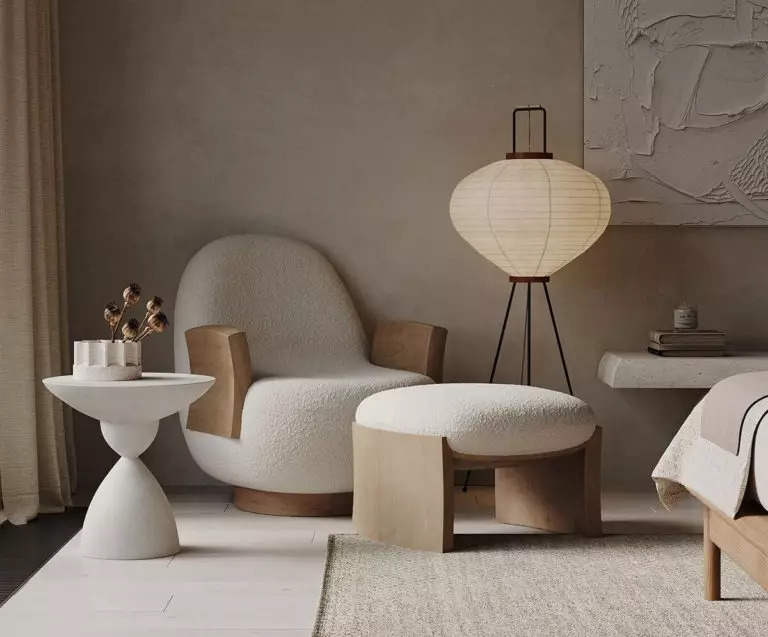Industrial-style interior design: all you need to know
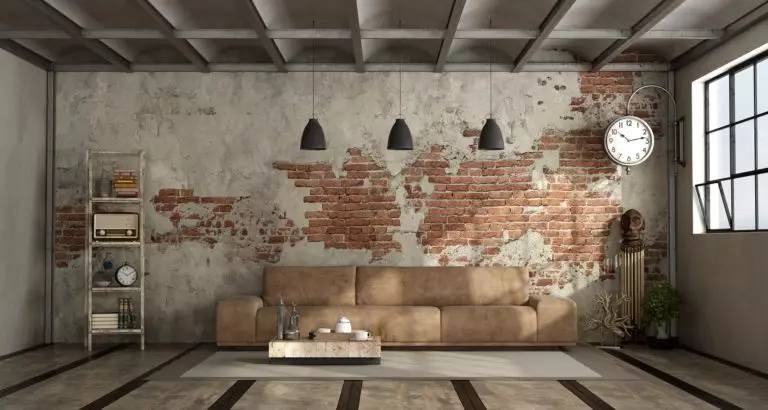
Today, industrial style in the interior occupies top positions in the lists of trendy styles. The feeling of free space, harsh urban textures, and natural palette inspire and allow you to fully experience the rhythm of a big city, its freedom, and ease. How to create such an atmosphere in your house or apartment, and who is this design suitable for? Let’s figure it out.
What is Industrial design?
Industrial design has a long and fascinating history. It is believed that it originated in the late 19th and early 20th centuries but began to develop actively only in the 1930s. That time in the United States was associated with the Great Depression and a severe economic crisis. This situation in the country led to the ruin of numerous factories and an unprecedented rise in housing prices, coupled with unemployment. All these circumstances forced the laid-off workers and far from wealthy bohemians to settle in those same abandoned industrial buildings – both for rent and secretly.
Over time, the residents of such “apartments” appreciated the somewhat gloomy but still unconditional aesthetics of their dwelling. The abundance of air and free space, high ceilings, relaxed textures – all this gradually attracted the attention of wealthier people who began to buy up industrial buildings, decorating them more elegantly and expensively but still preserving the industrial aesthetics.
In the mid-90s of the 20th century, the industrial style won love and popularity again. Slightly updated, with new solutions and materials, it still insists on freedom and the absence of down-to-earth splendor and over-the-top luxury.
You can apply wallpapers, paints, etc. on walls and see how they look in various interiors.
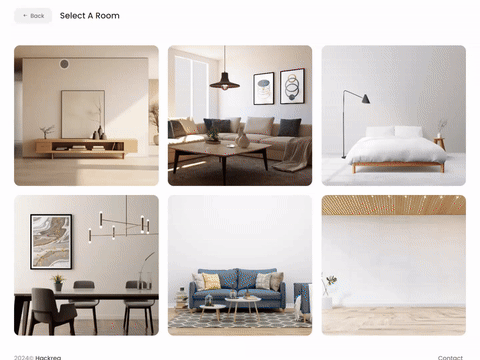
Basic principles and main elements
You can hardly find a style whose core principles were so obvious, even to those who do not consider themselves versed in matters of design. Let’s take a closer look at the basics of industrial style to determine in which direction we have to move when decorating the interior.
Colors and prints
Above, we have already talked about the basic color scheme for the industrial style, so we will not repeat ourselves now – we will just give you a list of colors that are relevant for such a design today:
As for prints, there are very few of them in the industrial interior. The only exception can be a dark carpet with a classic pattern or print imitating the skin of an exotic animal or a pillow with a geometric pattern.
Materials
Since industrial means minimal furnishings, finishing is key to creating an authentic interior. That is why it is worth taking a closer look at the design options for all basic surfaces in a house or apartment.
Walls
This is where the fun begins, as you have to deal with very rough textures. Leave brick walls unplastered. Take a closer look at concrete surfaces. Try to peel off old plaster – but not carelessly and not wholly. Or, if you really lack comfort very much, decorate one of the walls with wooden planks – preferably unpainted and with an aged effect.
Ceiling
When decorating the ceiling, you can use the following solutions:
If you have communication pipes running along with the ceiling, in no case hide them – they will become the very element that can convey an industrial mood to your interior.
Floor
The ideal authentic solution, in this case, is a concrete floor. However, suppose you do not have the opportunity to implement such an option. In that case, use a more comfortable and affordable material – large-format porcelain stoneware with a characteristic texture is by no means a rarity today. Also, ordinary wooden floors made of boards or the same porcelain stoneware are allowed, which can be personalized using the brushing technique.
For an industrial style, window decoration is equally important. Use open textured natural wood frames or black painted frames for a very harmonious look when combined with brick walls.
Furniture
Furnishing an industrial interior does not imply a pile of objects – everything should be ergonomic, concise, comfortable, and restrained. Common features of furniture suitable for this design are:
However, there are exceptions to such rules. For example, leather sofas and Chesterfield armchairs are frequent guests in an industrial setting. Everything else is strictly according to the script – massive wooden tables, metal cabinets that resemble safes, bookcases that resemble storage racks, and cabinets that are surprisingly similar to wooden crates for transporting food.
Lighting
When choosing luminaires for an industrial interior, you will have a place to turn around. Models reminiscent of technical lamps from workshops, design bureaus and workshops, metal lattice shades with patina, sconces on retractable brackets, ceiling suspensions in the form of cones and balls, and Edison lamps on cords – and in such rooms, you can often see a mixture made of all these elements. Which, however, looks quite harmonious.
A modern alternative to these options is track lighting, making the lighting scenario more flexible.
Decor and Textiles
The role of decor in industrial interiors can be completely unexpected things – for example, fire extinguishers, old payphones, or bicycles suspended from the ceiling or attached to the wall. Walls can be decorated with photos in metal frames made by hand from a profile, and even drawings and graffiti are applied directly to the walls. Basically, if you want authentic decor, you can do two things – go to specialty shops or stroll through antique shops or flea markets in search of half-disassembled radios, iron lamps, or unusual fans.
As for textiles, here you can more or less relax: there will be really little of it. Curtains in industrial interiors are almost completely excluded – in exceptional cases, they can be replaced by blinds, which is also rare since the design of window openings in such a design is not expected at all. Practically the only acceptable element can be rugs – without bright patterns or lint-free.
Industrial-style in various rooms
Knowing the basic principles of industrial, you can try to adapt them to different rooms in your house or apartment. We warn you right away: there will be nuances everywhere, but the process promises to be exciting. So, let’s begin.
Living room
When decorating this room, you can feel the most at ease. Leave as much free space as possible, place a furniture group of a sofa and armchairs in the middle (if a rocking chair is in this group, it will be great), and complement all this with a pair of leather ottomans, a low metal or wooden coffee table and a console or rack made of black metal. Coziness will be added by the same rug, stylish lamps, and green plants on the windowsills – however, in moderation.
Bedroom
Is an industrial style acceptable in the relaxing room? When there is desire, nothing is impossible. The key elements, in this case, will be a bed with a leather or fabric headboard (especially if it stands against a brick wall), a floor lamp with a laconic lampshade on a tripod or a sconce in the form of table lamps, and a bench at the footboard. Do not forget about the antique dresser and a couple of wooden shelves. If the prospect of spending the night almost in the garage does not really appeal to you, add more wood, throw a rug on the floor, and (so be it) hang dark curtains made of thick fabric.
Kitchen and dining room
These industrial-style spaces are very reminiscent of catering kitchens. Completely open communications, built-in appliances, laconic kitchen cabinets without handles (hurray for the push-to-open system), and an abundance of steel and copper dishes not hidden in cabinets create a truly inspiring environment.
Don’t forget the kitchen island, barstools, and open shelves, too – all of which are warmly welcomed by industrial style in interior design. The decorative part will be responsible for metal ceiling suspensions and wooden decor on open shelves.
Bathroom
Industrial-style bathroom design promises to be an even more exciting game than the design of the same living room. The intrigue will start at the stage of the selection of finishing materials. Whether it is just bare brick, brick-like panels, brick-like porcelain stoneware, wood panels, wood-like porcelain stoneware, metal-like porcelain stoneware with patina, or concrete-like porcelain stoneware – the choice of options can make your head spin.
However, keep yourself in control: you still have to find a laconic white bathtub, a sink on a simple metal stand, and a black shower head. It is also advisable not to forget about a functional wooden cabinet, an illuminated mirror or on a belt, and hanging lamps. In a word, there are many things to do.
Hallway
If you want your guests to understand that industrial reigns here as soon as they enter the apartment, rely on ergonomic hallways without a wardrobe with an open hanger, painted, brick or concrete-like walls, gray tones, and laconic glass and metal ceiling suspensions. A low and long wooden cabinet or a hanger stylized as a tailor’s dummy can be a good idea.
Teen room
The industrial style is hardly suitable for a kid, but a teenager may well dream of something like that. Realize his fantasies by decorating the walls with a brick, installing a bed with a metal headboard (or like a wooden one suspended in the air), and decorating the walls with stylish posters or images of traffic signs and signs of various institutions. The original lamps and comfortable leather chairs at the wooden work table are implied. If it’s a room for a girl, add a couple of bright accents – colorful pillows, a pink chair, or a row of stylish mirrors on the wall.
Modern industrial style
Under the influence of time, absolutely everything changes, so it would be strange to think that the industrial style has not undergone any changes after almost a century. Modern industrial pleases fans with the following nuances:
Industrial style: is it trending now?
Today, in principle, designers avoid talking about the acute relevance of specific directions in interior design. The same goes for the industrial style. He really has a strong personality, and with the right design and adding a couple of fresh must-have touches, you can create a truly unique environment with an industrial character. That is why if you dream of industrial style now, feel free to try: it is flexible enough, and if necessary, you can make significant adjustments with a minimum of effort.
Industrial style: why is it worth trying it?
At least for a change. If you adore the elegant classics and sophistication of Art Deco but at the same time are keenly eager for change, feel free to study the features of the industrial style and put them into practice. Perhaps such changes will inspire you to make significant changes in other aspects of your life?
Another reason to try industrial is if you have a huge house or apartment that you just don’t know how to equip. Industrial interiors offer straightforward design and layout principles, do not require much detail, and are simply designed for large spaces.
Who is the Industrial style suitable for?
Industrial is ideal for you if:
Industrial style in different countries
The industrial style is quite solid and has many stable characteristic elements. However, one cannot fail to note the slight differences inherent in such a design in different parts of our planet. Let’s try to find out a little more about style adaptations in certain countries – perhaps some of them will become genuinely inspiring for you.
USA
We will not be afraid of a tautology if we say that America has the most industrialized industrial. Many bricks (unbleached and unpainted), huge Chesterfield leather sofas and armchairs to match them, arched ceiling windows, and steel lamps wherever possible – this is the authentic atmosphere of industrial design.
Great Britain
The craving for elegance and aristocracy still leaves its mark on English industrial interiors. So, here you can often find large crystal chandeliers, light furniture, plastered walls (at least one), and massive bookshelves along the entire wall. In addition, such industrial often features decor with the British flag: patriotic moods are noticeable both on the pillows and on the posters on the walls.
China
Chinese industrial implies a fairly close integration with feng shui. That is why you will see here many round openings and arches, surfaces with natural stone finishes, and decorative elements in red, which, combined with brick walls and rough wooden furniture, looks very exotic.
France
The French version of the industrial style can be safely called “light industrial.” White walls and furniture, soft armchairs, and carpets of neutral shades are welcome here – which, however, does not negate the abundance of metal, open pipes of communications, and the absence of textiles on the windows.
Australia
Australians simply cannot imagine their life without natural materials, sunlight, and green plants – which is reflected in the industrial style. Perhaps, in no other industrial you will not see so many huge windows on the entire wall, such rich lighting scenarios, and such an abundance of greenery in pots on the floor and on the walls.
Sweden
Scandinavians strongly disagree with losing even a small amount of light in their home, so even in an industrial interior, dark colors are used to a minimum. Whitewashed walls, light floors, and planed furniture are preferred, while numerous black metal elements and lighting fixtures are responsible for the industrial character as if borrowed from an architectural firm.
Industrial style is a history of adapting industrial solutions to a comfortable everyday life, technological methods – to coziness and originality, brevity and functionality – to strive for freedom and simplicity. If you really like a similar design and you intend to act, we wish you good luck: as experts say, it is almost impossible to spoil an interior in this style!
